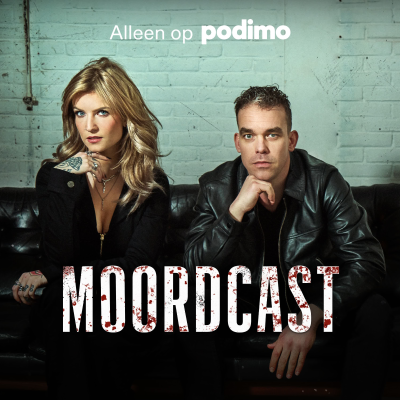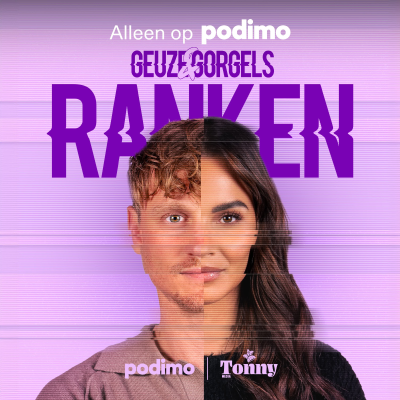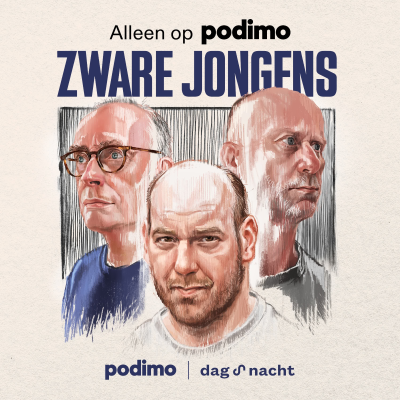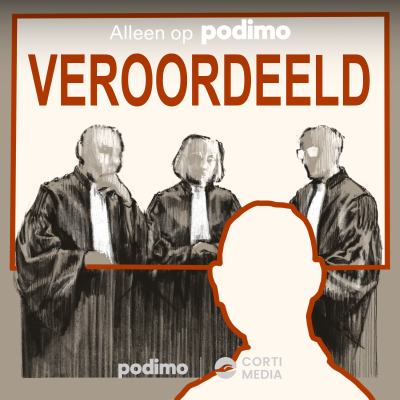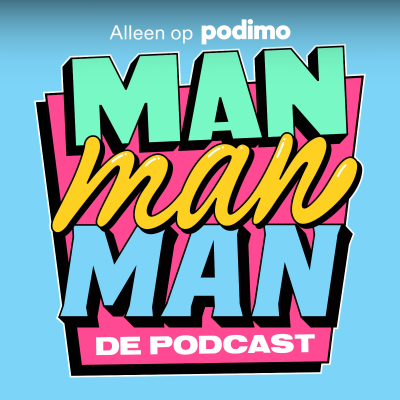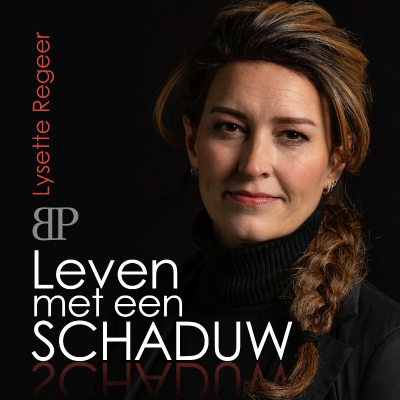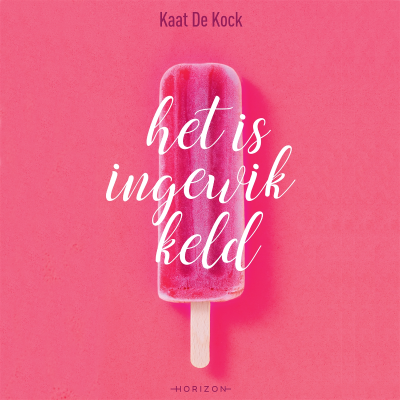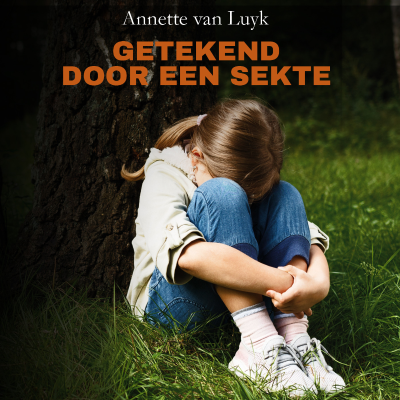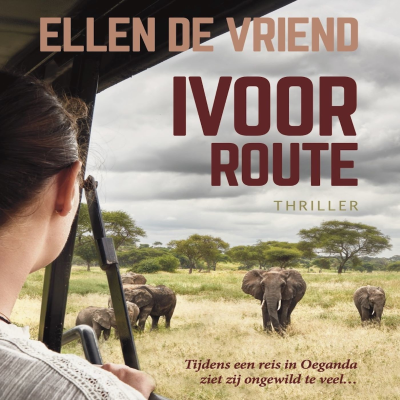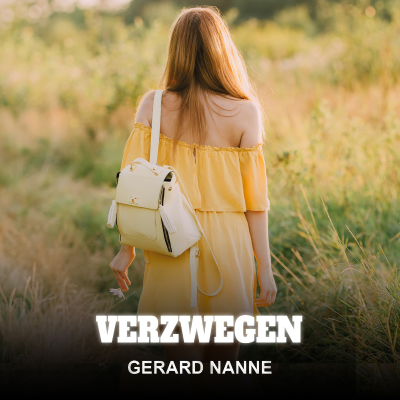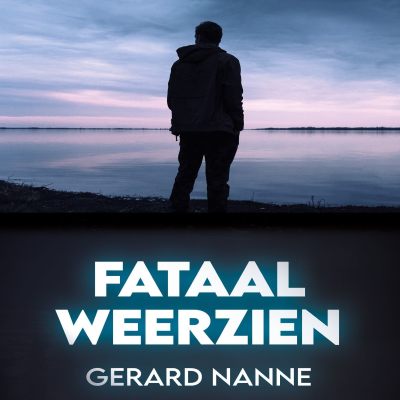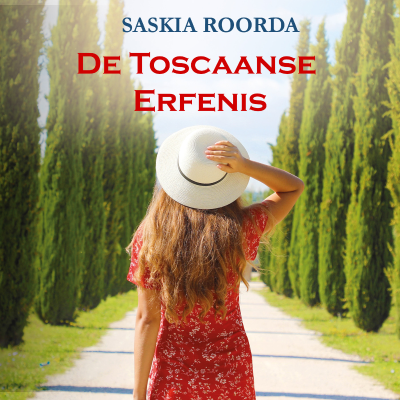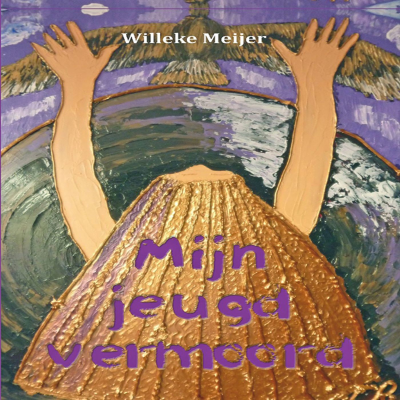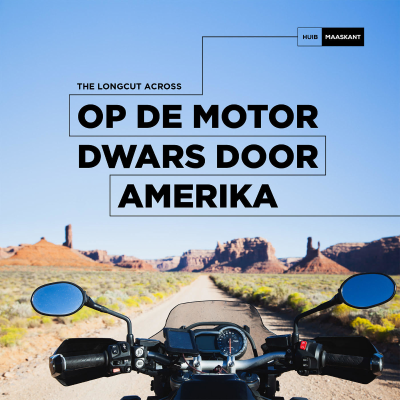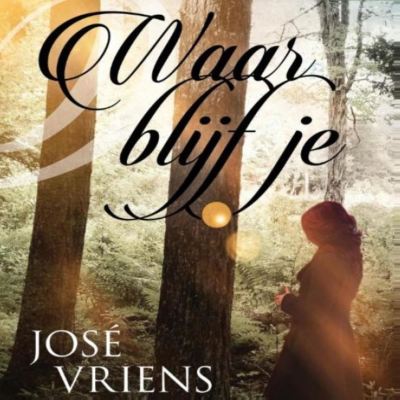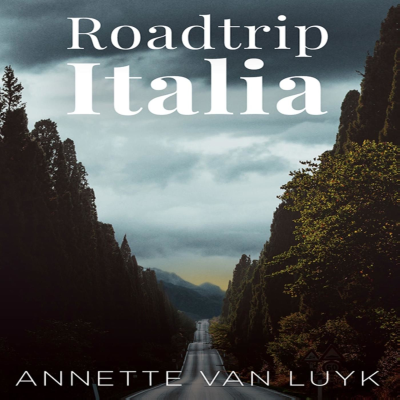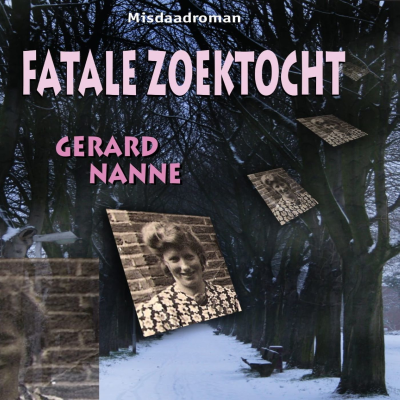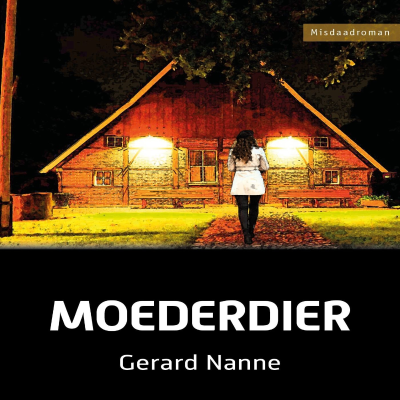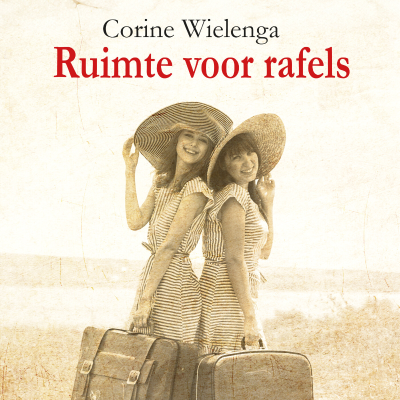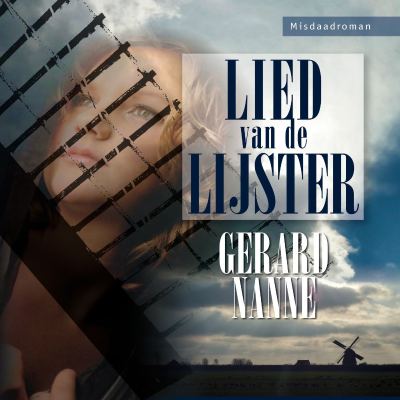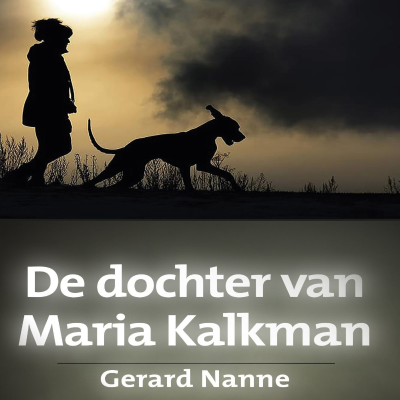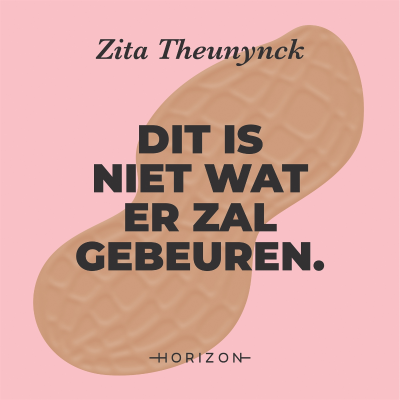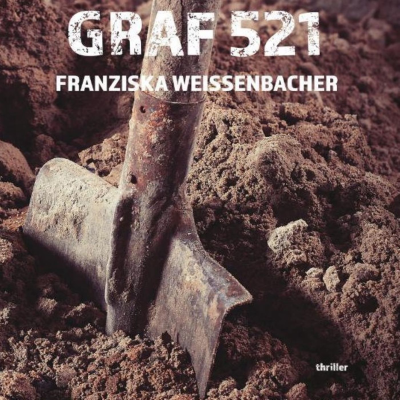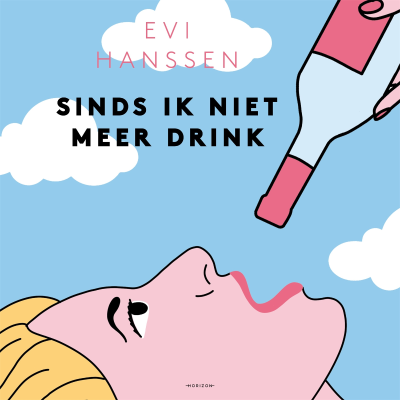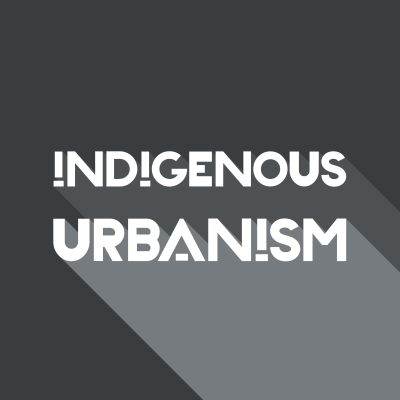
Indigenous Urbanism
Engels
Cultuur & Vrije Tijd
Tijdelijke aanbieding
1 maand voor € 1
Daarna € 9,99 / maandElk moment opzegbaar.
- 20 uur luisterboeken / maand
- Podcasts die je alleen op Podimo hoort
- Gratis podcasts
Over Indigenous Urbanism
Indigenous Urbanism is a place-based storytelling podcast about the spaces we inhabit, and the community drivers and practitioners who are shaping those environments and decolonising through design.
Alle afleveringen
25 afleveringenTe Mana o te Wāhine
EPISODE SUMMARY: On this episode of Indigenous Urbanism, we speak to two visionary young practitioners about the role of Māori women in shaping our physical environments, and the issue of diversity within our professions. GUESTS: Te Warihi Hetaraka, Elisapeta Heta, Haley Hooper FULL TRANSCRIPT: Modern Māori Quartet (Māreikura): Mā te wāhine, mā te whenua, ka ora ai te tangata. Wāhine. Māreikura. Te Warihi Hetaraka: At the root, at the core I think, of that understanding of it, is the understanding of mana wāhine. Mana wāhine under the korowai of Māreikura. Cause I think with colonisation, we've gone away from that understanding. And when our wāhine suffer, then we all suffer. and it's simply because we've gone away from that understanding, of the mana that our wāhine carry. We've gone completely away from that. And that's one of the tracks, that's one of the pathways that we need to establish first. Begin respecting the nurturers of our future. The first teachers, of our future, of our children. That has to be re-established, that understanding needs to be established, before we can even look at anything else. We come back again to the wahine. When the child is born, it's one of the most sacred moments of this planet. The birth of the child is the assurance of our future. Right here. And yet we've torn ourselves and our umbilical cord is sliced, is cut. The pito connects with Rangi and mother earth. So we've got to get back to that imagery. The moment you stop suckling from the breast of our mother, you suckle at the breast of Papatūānuku. So we've got to get back into that psychology. JK v/o: That was tohunga whakairo Te Warihi Hetaraka, nō Ngāti Wai. As Māori, we hold clear beliefs about the status and sanctity of women. Te Warihi’s whakaaro led me to reflect - how might our cultural attitudes towards women inform and direct the relationships that we have - with our environment? And what then, might be the role of wāhine Māori in shaping those environments? Tēnā koutou katoa Nau mai haere mai ki te Indigenous Urbanism, Aotearoa Edition, Episode 24. I’m your host Jade Kake and this is Indigenous Urbanism, stories about the spaces we inhabit, and the community drivers and practitioners who are shaping those environments and decolonising through design. On this episode of Indigenous Urbanism, we examine the role of Māori women in shaping our physical environments. We speak with two young wahine Māori practitioners - Elisapeta Heta, an architectural graduate from Ngāti Wai, and Haley Hooper, an urban designer from Ngāti Hau - about the thorny question of diversity within our professions. Both Elisapeta and Haley have featured on previous episodes on this season of Indigenous Urbanism, so do check those out. My first guest for this episode is Elisapeta Heta. Elisapeta is previous Co-Chair of Architecture Women, and the current Ngā Aho representative to the NZIA board, a role that was established through the Kawenata. There are very few Māori women in architecture, and even fewer Māori women who are registered architects. I asked Elisapeta - Why are the numbers so low? Why is it important to increase diversity across our industry? and How do we get there? Elisapeta Heta: From a representational point of view, which is something you touched on slightly, yeah, wow. I don't know that I have an easy answer around why there aren't many Māori in the profession. I can hazard a guess. And it's kind of partly based on, I suppose, anecdotal evidence, partly based on what I can see and observe myself, and partly through university as well, like the sorts of conversations I was having while I was a tuakana mentor at the University of Auckland. So, it seems like, and you can see this in some of the Pacific communities, the arts is, or hasn't necessarily historically been seen as a viable place to go. If you're going for higher education, you wanted to get thrown into law, and business, and medicine, and all the things that are seen as quite tangibly good careers. Architecture's a bit of an unknown. It's sort of seen as a little bit creative, some can see it as having links to engineering, but I think it's a little bit of an anomoly to our communities to some degree. But also I think it's something we just do inherently, all as humans, not just Māori and Pasifika, but all as humans, having housing housing is so fundamental to our ability to live. So, it baffles me as well. To some degree it's like, it's not necessarily seen as a career path, but it's so important to our sovereignty. JK: So part of it might be just the way the profession is communicated, so that it can be understand and be seen as relevant, which it obviously is. EH: Yes. And to not speak on behalf of anybody else but myself, it wasn't until I started university that I saw how much the profession looked nothing like me. And in no way represented my life, where I came from, and where I - quite naively at the time but probably ambitiously - thought I was heading. And that was always to be more helpful to my community. But, I suppose on first glance the profession has never presented itself as that. I realised it just took me having to carve that out for myself, so that's a little bit of blood, sweat and tears kind of thing. So we do have low numbers, and then the same, a lot of the similar issues around access, inclusivity, visibility, unconscious bias, all of those kinds of things, can be barriers towards long careers of Māori and Pasifika peoples in the industry. We already know when you look at stats around wāhine staying in the profession, for architecture we're really lucky, we have a good 50/50 kind of output of men and women, more or less. But we're still not necessarily retaining them in the ten years on position, and that's when the wage gap tends to appear. I haven't come across necessarily any good statistics that talk about the wage gap in relation to Māori within architecture. Partly because the numbers are probably so low that it would be fairly pointed I suppose, study, that would look at a very direct group of people. So you'd almost find out exactly what we were all earning, which may or may not be useful. It's looking at stats in different ways, and there's all sorts of ways you can slice it, but if you look at the general trajectory of average wage gaps or pay gaps amongst Māori and Pacific, and men and women, which are traditionally actually Pākehā men and Pākehā women in New Zealand as a whole, we already know that Māori women earn much less than Pākehā women, and Pasifika women earn less again. So, maybe we can extrapolate those numbers, I don't know. JK: I think you touched on the fact that we maybe don't have a complete picture of the problem, but we do have a pretty reasonable idea. So, my question would be, what can we do about that, knowing how complex it is, but what are some ways we can move forward? EH: Yeah. I think about that a lot. I think there a couple of potentially, deceptively - simple's not really fair - but, there are a couple of things we can do. As Māori, let's just think about Māori Pasifika, and I just talk about that I guess because for myself I am Māori and Pasifika. So, not trying to lump them all in as one, if anybody's listening to this and kind of going, what the? So, not lumping us into one, but this is my personal experience. I think we need to put our hands up more for being involved. What I mean by that, is getting on Boards, or speaking up in meetings, it can be that simple. Actually getting involved in your community. Kind of putting yourself out there to maybe be a judge on something, or to organise social events in your office, or speak on particular topics or issues. And I guess what I mean by that is, create visibility of yourself and of other Māori Pacific practitioners. And why that's important is that it helps maybe the practitioners that are standing beside them or around them to recognise the value of them, to recognise the value that Māori and Pacific points of views have, and also really critically important is for generations coming through. To actually be able to look to somebody and that is really crucial. And I suppose I have benefited from that through being involved in Architecture Women, where our entire sort of philosophy has been built on the idea of visibility and inclusivity. And the visibility part is literally just kind of social media, and newsletters and all those things that kind of go hey, these are people doing good things. But that could only really happen because those good people doing good things are putting their hands up to do stuff. Not saying be a chronic overachiever, cough cough, myself and yourself. But there are ways of speaking up slightly beyond what maybe comfortable, to just push a little bit. Because I think, in order for true change to happen we all need to pushing a little bit further. I think there needs to be a serious, very serious recognition of unconscious bias and what that does. Both from the wāhine tane perspective, so we get instances in which say, men don't realise that they have an unconscious bias to ask the male in the room a question over the female in the room. That's not necessarily something that they're doing out of malice, but it's actually something that they're doing unconsciously because it's a bias they have internally. That exists, that's one of those big barriers we see for women in a practice, that exists again as another layer for Māori Pacific. So everybody needs to get better at understanding what their unconscious biases are, pushing their practices - I think - to get more savvy around that. And I really think that people who are running businesses, who are directors, who are principals, actually need to just front up and be honest with themselves about what it is they are and are not doing as practices. And I'm seeing that with some practices, they are definitely making changes, and you can see the difference between those who are being truly honest and self-aware, and those who are not. JK: Something I've been thinking about just personally, is that because the numbers of registered Māori architects are so low, and particularly Māori women, I'm like, I've always thought I didn't really have time to do this, there's so many things I need to do, and now I'm like, I don't think I can afford not to. And I'm kind of like, I mean, I think we find ways to be really active in these spaces without being registered architects, but I'm also aware that changing our profession, well, you do have to be in it. So, I don't know, do you have any thoughts on the registration thing? EH: Yeah. The registration thing. Dun dun dun. At its base, getting registered is not, for me, about the 'congratulations you are an archi-ma-tect, you can architect things.' No. It's not necessarily about that sign off, so much as it is about me knowing for myself, that I have had the experience in architectural practice, to understand the breadth and depth needed to be registered. And what that means is, is that commitment from my employer, and the commitment from myself, to be on projects that allow me to see that whole process through. The reason why that's important, I think, from a Māori community point of view, from an, I suppose, having more architects who are Māori there, present, is that, you know what, it's a really important skillset, and it's a skillset our communities need. We're all, I've noticed a lot of us are all quite good at talking. Cough cough. Again. Me and you. But no, seriously, I don't know if it's just marae life training or something, but we're all quite used to having to talk things through, to narrate a story. I mean, that's the way we grew up. We grow up listening to stories, so we grow up thinking that the way we speak to each other is through stories. So, talking is like just Māori 101. Now, we can talk till we're blue in the face, but, the deeper you get into a project, which is what I'm finding as a, you know, I feel like a baby graduate architect, but never the less, deeper into a project I get, the more I realise that my talking up the front end just gets better, gets clearer. My understanding of how I can speak to our whānau, to our communities, to the Council, to the government, actually, about Māori ideas actually translating into real outcomes, gets better. Because I know that if I'm saying blah blah blah tukutuku panel needs to be cut, needs to show up in this precast panel, I actually now know what it takes to get it on site. Because I've said the words, then I've drawn the drawings, then I've detailed the drawings, then I've looked at how that details does or does not work. And then we've kind of maybe value managed some of that out. Or maybe we haven't. And then we're talking about how we get onsite, rada rada rada. It's literally for me, just seeing that process through, so that I know that when I come back to those stories again at the beginning, I'm not promising the sky and can't give it. And I also think we deserve much better design outcomes. And I think for a long time, due to all the things we know, aka colonisation, that we've just been in a survival mode, and survival mode doesn't look pretty, and I think we deserve better than that. JK: And our communities deserve better. EH: Yeah. Way better than that. Our marae can be amazing. Our papakāinga can be beautiful. We don't have to live in sub par housing. Architects are literally trained for that. We're trained for that design problem. We're trained for the pragmatics, for the logistical stuff. We're trained to be the creatives. We have the skillset. So, yeah, our communities need it. JK: I've reached that point too, where I'm starting to see the boundaries of my current skillset, and my competencies, and I'm like, I just need to be better. My communities deserve better, I need to have that level of skill so that I can serve my communities better. EH: All I would say is, our impatience, mine and yours, and many others, are legitimate. But also just there because we can see the urgency, is one thing. There is a bubble at the moment, it's this huge wave, that's coming from kind of all directions, and we're responding to it. And what I mean by that is, like, living in Auckland, we've got 19 iwi around the general Auckland region, and 13 in the Tāmaki Collective, who are all putting their foot down and saying, you know, public projects in the City are going to involve us. And so that means that the people on the other side of the table, which is the side of the table the architect sits on, need to know how to communicate that information. So there's another demand. The Council are putting it into their briefs, into their RFPs, into their things. The government are thinking about it. We have a kawenata. Pressures kind of coming from everywhere, and I think we're responding to that. And also, it's exciting. And also, we're ambitious. And we're ambitious because we've been given tools to be ambitious, and finally I think living through the potential that probably our parents had, but didn't necessarily have anybody there or any way, mechanisms in which to break those barriers down. So they just had us - the crazy ones. JK: My mum, you know, she quit school when she was 15, cause she then had a baby. But when I was growing up, she always read to me when I was really young, she was always really big on education, and she always supported me on anything I wanted to pursue or was interested in. EH: My mum is exactly the same. Mum did fifth form twice, and didn't quite make it to the end of that. And for many reasons in her life, left Aotearoa. So she hadn't technically finished high school. She went back to school as an adult, at 24. Because she really wanted to be a librarian. So she really saw the value in knowledge. But, Mum had a lot of barriers in life. Really, really big barriers. And education wasn't really seen as valuable in her house. She just needed to get a job. Just get a job and work. And that was fine, but Mum knew that for me, she read to me insistently, she made sure that, even if it meant, and often it literally meant working four to five jobs to make sure that there were opportunities to do, you know, singing lessons, and drama lessons. My brothers could get support with maths and english, or whatever. Education was important. And to the best of her damn ability, she fought really hard to make sure that I had what I needed. And she never had anybody fight for her like that. So, when I say I do these things for my whānau, I mean it very literally, and I know that for my nieces and nephews and hopefully one day for my own tamariki, every little interview, every little job we do, every person we've taught to say things correctly in te reo, makes a really big difference to their lives. JK: I really loved that. Big mihi to our mums. EH: Yeah. Massive mihi to our mums. JK v/o: I also asked Haley Hooper, nō Ngāti Hau, for her whakaaro on this issue. Why does representation matter, from both a diversity and Treaty perspective? Haley Hooper: I think it's a very important question to ask, and I think the fact that we don't have a lot of Māori women, or Māori in urban design, or even in architecture - like it's getting better but there's still limited numbers, we definitely have a need to grow our rangatahi into those spaces. So, I think, from my point of view when I think about being Māori in the design space, or myself in the design space, I think sometimes it has been an uncomfortable environment, and sometimes it's difficult, the processes that you go through, and it's an identity search as well, of like how are you fitting into these places, and how are these places representing themselves. And you're trying to establish what your ideas are in a kaupapa Māori way, sometimes, and in Pākehā way, and then in a development oriented way, and you're always negotiating the multiplicity of influences, and still trying to figure out where you stand in that, as a young designer. So I think as much as I love design, and the position of urban design, as a role, and as a Māori woman, I don't think it's always been a comfortable space to be in, specifically. And I'm not sure how I feel about that, or how to make that better. I think the thing is, it's all about education and awareness and things growing, and us getting stronger in that space as well. I think it's a very male-dominated industry as well all know, and it's male power heavy too. So, yes there are a lot more women in the industry, but as you get up to the top and the more important the projects seem to be, there is still a really strong lack of women in those places, and Māori women you very rarely see them, and when you do seem them you have huge admiration for them being there, and there are some very strong Māori women working in this space. But I'd love to see more coming through. There are certain norms and behaviours and cliques and types of things that exist in our industry that you're getting to know as a young designer, and then at the same time you're trying to figure out how you fit in to them, and they relate to things like, you know, what's the company's values, or what's the project's values, the priorities, the perceptions of people, the different hierarchies that you're working inside of, and those structures and establishments. And then I think, when you add the kaupapa Māori side to it, and then you try to figure out how that all works in together, you could say it's contrasting, and then sometimes it's in conflict with. And I think it's just how those things come together. Sometimes it works great, and other times it doesn't. And it's just a process of evolution, that you're trying to grow and understand yourself, and your identity in that space. Without conforming to the norm all the time. And then if you don't conform to the norm, where does that leave you, and what is your voice? And I think sometimes, on the inside, I'll be sitting in a room, and I could possibly be thinking a complete other thing to the way that it's been presented, and then it's like, what do you do then? JK: Something I've really struggled with, was, I mean I think I have the strength in my convictions now, through experience, but I felt the same things quite strongly, you know, six years ago, ten years ago. But I didn't have the confidence to voice those, because I didn't have the experience. It just felt like an intuitive thing. And so you kind of go into these spaces, and you're like, that doesn't seem right, but I don't know enough to know that I'm correct in that. Which can be a really tricky place, because you feel like you're learning, but then somehow you still have to be, you have to be an advocate, and it's kind of a lot. HH: Yes. Yeah, well I think you're really in the flux of learning, and you can sometimes be right in the front face of something, and you've got an idea, and you're like - should I say it? Do I say it? How do I say it? Is it appropriate? How's it going to recieved? Is this even the right space or place to say this thing? And how are these people going to take it on, and will it make a difference? But I think at the end of the day, if you've got an opinion that's strong and true you should always try to make it heard. I guess from my personal point of view, I'm probably still working on making that happen. But I hope that when it's very necessary that I do have the confidence to say it. JK v/o: This episode of Indigenous Urbanism has been supported by The Diversity Agenda, an initiative aimed at driving change within New Zealand’s architecture and engineering industries. Dedicated to improving diversity and inclusion across the board, the Diversity Agenda’s overarching goal is getting 20 percent more women into engineering and architecture roles by 2021. The Diversity Agenda started as a collaboration between industry bodies Engineering New Zealand, the New Zealand Institute of Architects (NZIA) and the Association of Consulting Engineers (ACENZ) - and more than 75 firms have come on board since its launch. To find out more about the Diversity Agenda, please visit diversityagenda.org. Indigenous Urbanism Aotearoa Edition is a production of Te Matapihi. Sandy Wakefield does our sound recording, editing, and mixing. Our theme was composed by Thomas Burton. I’m Jade Kake, your host and Executive Producer. For more information about today’s show and other episodes of Indigenous Urbanism go to indigenousurbanism.net. You can drop us a line at info@indigenousurbanism.net. And if you like what you’re hearing, please give us a review or rating on iTunes. That’s it. That’s a wrap. That was our last episode of the season. We’re on hiatus right now, but we look forward to you joining us for more great stories on Indigenous Urbanism in 2019.
In Conversation with Cheyenne Thomas
EPISODE SUMMARY: On this episode of Indigenous Urbanism, we speak with Cheyenne Thomas, an architectural designer from Peguis First Nation, about her work with First Nations communities in Manitoba, and her role as a designer and advocate. GUESTS: Cheyenne Thomas FULL TRANSCRIPT: Jade Kake v/o: Tēnā koutou katoa Nau mai haere mai ki te Indigenous Urbanism, Aotearoa Edition, Episode twenty-three. I’m your host Jade Kake and this is Indigenous Urbanism, stories about the spaces we inhabit, and the community drivers and practitioners who are shaping those environments and decolonising through design. On this episode of Indigenous Urbanism, we speak with Cheyenne Thomas, an architectural designer from Peguis First Nation, about her work with First Nations communities in Manitoba, and her role as a designer and advocate. Cheyenne Thomas: I am Anishanaabe, Ojibwe, that's my tribe. From Manitoba, Canada. I grew up in Winnipeg, my whole life, and my family is from Peguis First Nation and Saugeen First Nation, and I'm a designer in architecture, and I also do installations at a bigger scale with my father, who's also a designer. The focus is Indigenous design, and so that's who we try to work with. JK: So we were really excited to meet you this time two years ago, when you and your dad came over, and you met all of us, this Ngā Aho crew, and we started this awesome journey together. But it was really exciting for me just to meet another young woman just smashing it. And then we went over to see you again last year. And so, I just wanted to maybe ask you a little bit about your practice and projects over back home, and what are some of things you're working on, and how have you kind of connected that with some of the exchange and experiences we've had? CT: Okay, so, I did two buildings with my dad, we designed. They're 75,000 square foot buildings for two different First Nations in Manitoba. That was in the process when we met, two years ago. From that, we worked on the Assiniboine Park, revitalisation of the whole park, which is 1,000 acres in mass. They have a massive building, and a couple gardens. Part of it was to have an Indigenous garden, where they brought me and my dad on as lead designers. From when we did meet at the last hui, there was, it was more than just a conference, it was more people together, not so formal, where we could really connect without the labelling of architect, landscape architect, industrial designer. Where you actually have a collective of people just kind of supporting you, and from that there was different things we did during the conference, like sing songs, eat together, feast together, sleep together in the same marae. So for the Assiniboine Park I tried to architect the process, where we consulted with my community, our communities in Manitoba. So I got them to, I brought singers in, I brought food in as a component, to eat together, have discussions while you're nourishing your body. And those are all inspired by my experience at the last hui. JK: I'm hearing that community-based process is really important, and the way we kind of bring in our own cultural lens and way of doing and being into that process with our communities. What was the process of engagement for that community project? How did that come about, actually? CT: So that project, it actually, that park has been there for hundreds of years. And it's a European park. So they wanted to revitalise it, and they had the big building, designed by KPMP in Toronto, and they also had a couple gardens. The head of the park went to a community presentation, and this one Native girl said, I do not see myself in this park at all. So, she took, that was a pivotal moment for her, in the project. And for the Indigenous gardens, knew that was really important to have Indigenous designers. So, approached my dad and I, to start discussing and imagining this process of bringing our people into this consultation process. JK: Now you talked about your dad a bit, and so it's pretty amazing the two of you work together quite closely on a lot of projects. Was your dad a big part of the reason why you got into architecture, or what kind of led you into architecture? CT: I guess I was exposed to architecture, not just architecture, I was exposed to design, creativity, the whole creative process. Which at the time was not named the creative process. It was just exploring different ways of expressing building, and moving things around, creating or designing your own spaces to excite your childhood imagination, right? So I grew up with having that. Big pads of paper to draw on, this very loose way of moving around, and expressing yourself. So when I got older, went to University, all these courses I took. They weren't as exciting to me, they seemed very, not that there's anything wrong with those, I just grew up a totally different way, where I could freely express myself all the time. So, my dad exposed me to that, but I definitely chose architecture by myself. JK: So you live in Winnipeg. How far is that from Peguis First Nation? CT: Peguis First Nation is two hours away from Winnipeg. North. JK: Have you been involved in much work in your community there? CT: The first project outside of undergrad was the Multi-plex expansion on the existing hockey arena. Which we did the full construction drawings and everything for that, which took about a year. It still has yet to move forward, there was a change in Chiefs. So, politics. JK: Yeah, we're familiar with that scenario. So is it quite rural there, on reservation? CT: Yes, it is. We have a mall, but it's very small, it's basically a grocery store, bank, band office. And then we have a school, which is very nice. It was designed really nice, but not by native designers. Now we have a hockey rink, but we're one of the most, not progressive but biggest reserves in Manitoba. We have 10,000 people. So, I'm lucky to have that on my reserve. Other reserves don't have those things. JK: Yeah, I think something that we experience here, there's a real tension between hau kāinga or home communities in rural areas, and the cities where a majority of our people are now living. So I guess, how have you kind of navigated that space, and how is your approach different when working on reserve as opposed to working in our urban environments. CT: Okay, so, the one for Peguis, that project, I wouldn't say we successfully navigated that. Because, a lot of people, when you say architecture, they shut down. Because, for them, what does that mean. I am on the reserve, and never been exposed to anything like that. So we had a community presentations, and no-one would show up, really. No-one's excited about that. So, I think, that was the first project I was out of school. If I was to do that again, I would make it at schools, but not just present it on boards. I'd have interactive presentations, where you're one on one with kids, and you get them to see other than just that word. How these spaces are directly connected to how they, getting excited about things. JK: It was great to hear you talking about rangatahi or young people, cause I think in the conventional architecture process, our young people are often kind of marginalised or not involved. And I think something that we're consistently finding with our community-based projects, is that you absolutely need to find new ways to make the overall engagement process accessible to young people, but also do specific things with them, to show that you're really, they're voice matters, what they think matters, and their experiences matter. And you don't have to do that from the role of up here, being the professional. You can actually be on the same level and have an exchange. JK: In the last year I've had this idea, of how when you go into community you can't really get kids to get excited about architecture. They just shut down unless they've been exposed to it. I have this idea of this school, in the future, if I ever got to do this. This Indigenous design school that was not like the schools we have typically, the European schools, where you have the classroom, and you're very confined to each subject. But we have the schools where there's studios, and they're movable walls, and you can use the latest technology to interact with the wall with drawings, and it's like a big playground to learn. But how about we imagine these schools where it's just a big movable school, where we could adjust to what excites them, and we have the latest technology, projections, interactive walls where it's not just architecture, maybe it's architecture and pow-wow dancing, maybe it's singing, and poetry, and literature, where you get to explore things combined to what excites you. But you have these Indigenous teachers who are doing these really neat things that can like help you explore and expand your ideas as a young person. And it could be dance, it could be architecture and dance, it could be singing, and there's a performance stage where your community could come and watch. What is my child doing? And we have satellite schools to northern rural communities, where there's a transparency they can tune into, lectures, or studios in that home-based school. So they constantly have this access to our knowledge. JK: And it keeps them in the community. CT: But can stay in their community. And I have this idea of this big pow wow wall in the city, and it every week has a different pow wow. And, to be more specific, you walk into the school and it's this massive concrete wall or whatever, and you have a projection, cause in Manitoba every week we have pow wows in different communities, Saugeen, Peguis, Long Plains. And we have a live feed of the pow wow at a human scale, so when you walk in this school you immediately see your home, you have to acknowledge, okay, that's where I come from, don't forget that. You could tune in to an app and hear actually the announcer announce your family members at the pow wow, and when you miss home, you can come watch the pow wow. And it's constantly going through the summary. That's like a specific idea I have. JK: That's a very clear vision. It's beautiful. That's how you work towards these things. Just got to have a clear vision. JK: So the title of this podcast is Indigenous Urbanism, and the whakaaro behind that is, you know, our Indigenous communities are reaching this really critical point, politically, in the development of our disciplines, and we're increasingly able to actually have influence and lead the design of our physical environments. And I think they look very different to the colonial environments that we've become accustomed to. So, I just wanted to hear your whakaaro or your thoughts on that. CT: I think, physically and also non physically, spiritually those aspects of our cultures and how deeply rooted they are in land, how deep we can connect to people with having those, people are starting to realise that, and missing that. So, through the cracks of society the lights kind of coming through. And, regardless, it will always be very strong. The more we move forward with this momentum. And physically, we're getting these opportunities, because I feel like it's meant to happen. For me, we get these projects, and now all of a sudden you're growing it even more, in like a more tangible way, I think, in Canada. For me and my dad. So I think it's very exciting. JK: There's been a real shift in recent years, and I think there's a movement building, and we're really, well, we're really seeing that, both from the outside, but also together on an international level. CT: Definitely. JK: So we've been talking a lot about being Indigenous women, working in the area of design, and it can be not only very white- or Pākehā-dominated, but also very male-dominated. And just thinking about how we might support one another, navigating these spaces. Do you want to talk a bit more about that? CT: Yeah. Well, for example, the way we've supported each other across the ocean, in Canada and here in New Zealand, with our design family, I'd call it. We constantly feed each other information about what's going on, on each side, and at a smaller scale, for women, I think it's very important that we do something that's more articulated, to help us kind of elevate our ideas, and different problems we face in the professional work environment. We have the same problems. We can relate. How do we help each other to trouble shoot, or find a way to move past those ideas, or those problems? And even the discussion is helpful. So you know you're not alone on these things. JK: Cause I think it's so easy if you're facing barriers or people kind of takahi your mana, it's easy to just kind of internalise it and start questioning, thinking, oh am I not good enough, what am I doing wrong? But if you kind of share these experiences and share the load together, you start to realise, actually, this is a kind of a common thing, that we're all facing, and it gives you more confidence, both in terms of emotional support, but also quite practical support. So if we know what's going on, we can actually come in and support one another, make opportunities available, and start to kind of break through some of those barriers. CT: Yeah. Exactly what you just said. That's what I feel we need to do. Also, if we were to exchange, you come to Canada, I bring people from Canada to here, it starts this momentum where the conversation elevates above that, and we think at a bigger scale, how can we bring women across Canada and here, and let them know that, yeah, you're not the only ones going through these issues, let's all come together, maybe we hold a hui or conference, and really dwell on how we can support each other in a bigger scale. JK: And something I've found, not just here but internationally, is that even in the Indigenous design space, a lot of our leadership is men. And there's not, there's a few, but there's not many women who are up in that next generation above us. But there's a lot in our generation coming through. And so as we're all rising together, how do we support one another and maintain positions of leadership? Because I think there is a real problem with women leaving the profession as well. CT: Yeah, maybe more specifically, cause we have access to all this technology, video calling, database, websites, group internet chats where you can constantly have a conversation going. Maybe that in a more specific way could be something we start at. And then we have maybe a monthly meeting to start to figure out what this all means. JK: And even just knowing that we're there. Cause I think one of the problems with, I guess when you look at the top of professions and they're all white men usually, there's like that implicit bias thing, right, where people identify people that are like them for progression, and I think, without going to affirmative action on it, I think, people might say, oh, we didn't invite any Indigenous women because we don't know any. And it's like, well, we're here. It's not too hard to find us. CT: Exactly! So, also expanding our networks, so, say, someone on the west side of Canada, and east side, we can help each other with our resources, on either side. JK: That's us then. Any concluding thoughts? CT: No I think it's a good start. JK: Keep this conversation going. Kia ora. JK v/o: This episode was recorded on location at Nā Te Kore, the second international indigenous designers hui hosted by Ngā Aho in March 2018. Indigenous Urbanism Aotearoa Edition is a production of Te Matapihi. Sandy Wakefield does our sound recording, editing, and mixing. Our theme was composed by Thomas Burton. I’m Jade Kake, your host and Executive Producer. For more information about today’s show and other episodes of Indigenous Urbanism go to indigenousurbanism.net. You can drop us a line at info@indigenousurbanism.net. And if you like what you’re hearing, please give us a review or rating on iTunes. Coming up next on Indigenous Urbanism, we examine the role of Māori women in shaping our physical environments, and speak with two young wahine Māori practitioners about the issue of diversity within our professions. Haley Hooper: I think it's a very male-dominated industry as we all know, and it's male power heavy too. So, yes there are a lot more women in the industry, but as you get up to the top and the more important the projects seem to be, there is still a really strong lack of women in those places, and Māori women you very rarely see them, and when you do seem them you have huge admiration for them being there and there are some very strong Māori women working in this space. But I'd love to see more coming through. Elisapeta Heta: I think there needs to be a serious, very serious recognition of unconscious bias and what that does. That exists, that's one of those big barriers we see for women in a practice, that exists again as another layer for Māori Pacific. And I'm seeing that with some practices, they are definitely making changes, and you can see the difference between those who are being truly honest and self-aware, and those who are not.
Ōtautahi Revealed Pt 2
EPISODE SUMMARY: In part two of our story on the Ōtautahi rebuild, we look at the work of Ngāi Tahu and Regenerate Christchurch to develop alternative uses for the residential red zone area to the east of the City, including the re-establishment of biodiversity and food gathering areas. GUESTS: Teoti Jardine, Hugh Nicholson, Debbie Tikao, Te Marino Lenihan, Evan Smith FULL TRANSCRIPT: Jade Kake v/o: On September 4th 2010, February 22nd 2011, and many occasions afterwards, major earthquakes shook the city of Christchurch, allowing the old wetlands to temporarily re-establish themselves, and leaving swathes of land, especially to the east of the city, uninhabitable. After its century-old Treaty of Waitangi claim was settled in 1999, Ngāi Tahu made quick work of restoring its political, cultural, and economic influence. However, Christchurch remained visually and culturally dominated by English aesthetics and values. What’s happening in Christchurch today may be a world first situation, and in the wake of a devastating natural disaster, the local indigenous people are involved in the redesign of a city from the highest governance level right through to the actual physical reconstruction. Teoti Jardine: The empty places behind you, and the empty places where we were, they were filled with street after street of empty houses. The people had gone, their houses were there waiting to be demolished. And it was coming up to our Matariki celebration, that was over in our other little area which was a Council playground. Where for the first time after the earthquakes, people were coming to plant again, and to reconnect with the land. So, now, I'll shut up and tell you. It's called Rezoned. Empty breezes wander streets Where the windows of silent houses Gaze without any expectations There was no time for farewells Only the hurried leavings Come quickly, don't turn back Nothing is left here now Yet, around abandoned playgrounds Children's laughter lingers Making the invitation, to come Grow, plant, forage Among the stories of those who stayed Singing, swimming, roosting Through sunshine, rains and mist Filling the breezes with hope Kia ora koutou. JK v/o: Tēnā koutou katoa Nau mai haere mai ki te Indigenous Urbanism, Aotearoa Edition, Episode twenty-two. I’m your host Jade Kake and this is Indigenous Urbanism, stories about the spaces we inhabit, and the community drivers and practitioners who are shaping those environments and decolonising through design. On this episode of Indigenous Urbanism, part two of our story on the Ōtautahi rebuild, we look at the work of Ngāi Tahu and Regenerate Christchurch to develop alternative uses for the residential red zone area to the east of the City, including the re-establishment of biodiversity and food gathering areas. TJ: Tēnā koutou katoa, Ko Teoti Jardine ahau, Ko Waitahi, ko Kati Mamoe, ko Kai Tahu oku iwi. JK v/o: That was Teoti Jardine. Teoti is a poet from Ōtautahi and a kaumātua for the Avon-Ōtākaro network. TJ: It wasn’t long, that in my connection with the red zone, that I realised I'm walking through the memories and the stories of my Waitaha, Kati Mamoe, Kai Tahu tūpuna. Who came here for hundreds of years gathering food, and gathering resources and teaching their children how to do this mahi. And, when they did this, they came and they greeted the rivers, they greeted the land, and the land nourished them, and their greetings nourished the land. And for me, those memories, those stories of my tūpuna, are in this land. And whatever happens to the red zone, those memories and those stories need to be honoured in whatever way it's possible. We've just seen how some of these stories can be honoured in the city. The red zone is a clean slate. No-one knows quite what to do with it. But for me, it's a place that holds those memories from hundreds of years ago, and those stories from hundreds of years ago. And they feel, now with my connection to the red zone, they feel like they are my memories now. And they are my stories. And whatever happens in the red zone, I would like to see some honouring of what those stories are. My tūpuna, my ancestors, we were the first ones to be red zoned. When the settlers came we had to move, and now they came and they built in the place where, our old people said why are they building here? This was our food basket. But, oh no, we'll drain it and build houses. Well, you can see what happened. And, for me, Ruaumoko has returned the land to us, and given us the opportunity to allow the land to return to its original purpose, which was a mahika kai, a place where we gathered food. We’ve seen downtown how those reflections of our tūpuna are happening now. They weren't there before the earthquake. So, honestly, the earthquake has given us this opportunity to place our mark on the land once more, and tell the land's stories through it. There has been some kōrero around, can we designate this red zoned land to be its own personality? And under the kaitiaki, under the guardianship of Ngāi Tūāhuriri, so that’s still something that’s in the wind. This is an opportunity that very few people get. And that's thanks to Ruaumoko. I know a lot of damage was done, and a lot of heartache. But for me, he's been giving us this opportunity, and we need to take best advantage of that as we possibly can. Hugh Nicholson: Residential areas, and of course folk planted fruit trees in the sections. And nobody told the fruit trees that there'd been earthquakes, and so the trees continued to fruit, even after the sections had been abandoned. So community groups have come around and taken the fruit from those trees, and redistributed them to social organisations that could use them. In the City we saw some great examples of artworks, physical manifestations and here we’re trying to incorporate underlying design principles that gives us strategic direction for the whole project. My name is Hugh Nicholson, I’m a Pākehā and I live over in the base of the hills here. I work for an organisation called Regenerate Christchurch, which is owned half by the government, or the Crown, and half by the local Council. We're a planning agency, so our job is to plan for the future of regeneration Christchurch. JK v/o: Regenerate Christchurch was established in 2016 to lead the regeneration of Christchurch, and have been working closely with Ngāi Tahu on various projects, including the re-establishment of māra kai in the red zone. HN: One of the specific tasks we’ve got is planning for the future of the red zone, that we're walking amongst. There's lots I could talk to you about, but I thought what I'd talk to you a little bit about is how we're going about it. So I'm a designer, I originally trained as a landscape architect, and I became an urban designer, and I've kind of worked in all sorts of places. And look, for years, you know, we've grappled with the Treaty of Waitangi, and how do we collaborate, how do we partner with local iwi and design in partnership? To be honest, you know, I've been through all sorts, we've tried all sorts of stuff, and I don't mean to run it down, but you know, we sent plans off, we consulted, and sometimes we get comments back and sometimes the council or whoever makes changes, and sometimes they don't, and to me it never felt like a, felt like a partnership really. I don't know how to describe it. What we've done, what we've managed to do, I think, is to setup a relationship with Ngāi Tūāhuriri and the Matapopore Trust. Whom you've heard a lot from. So their designers, we setup a design team for the red zone, or you know, I set it up, and their designers are working, we're working at the same table, with pens. Well, not with pencils and pens, but with computers. But you know what I mean - metaphorically we're drawing plans together, we're making the plans as we go. We're having the discussions about values, and about how things should be. And to me that's the first time it's felt like a genuine partnership, in terms of design. That actually, you know, we're speaking the same language, we're using the same tools, and we're writing things down. So that's been a real, it's an eye opener for me. For that happen, and I think it's, there are a number of things which are really important. One of which is the Matapopore Trust. Look, all of these things are about having relationships with the right people. And you know, and I think Te Maire alluded to some fairly, some disastrous attempts, in the early days after the earthquakes, to start designing things which went wrong, by talking to the wrong people. Matapopore Trust is set up by the rūnanga, you know, it's established, and it has their mandate and their confidence to actually make some decisions, to design on their behalf. And that's essential. We're not just dealing with any Māori designer, we're sitting design with the people whom the rūnanga has said, your responsibility is to design on our behalf. So that relationship is really important, and that's something we have to keep checking back. And I guess, you know, for us it’s been a great partnership. I joke in terms of the design that my plans are really just an excuse to sort out three important things - funding, ownership, and governance. They are the things. I have a project where I have no funding, I don't know who owns it, and I have no agreed governance. So that's really the important questions that are on the table about this red zone. That's what's going on behind the scenes, as the various players are sorting those things out. And the plans are something that give them a reason to sort them out, to figure out what’s going on. We’ve tried to setup kind of a philosophy of mahinga kai, and I realise I'm amongst a group of people who know much more about this than I do, largely, my iwi colleagues. But what we realised is that Pākehā culture, we have a kind of long history of setting up National parks and things. You know, where you have a bit of land, and you protect it. You make it green, and you kind of keep people out. It's protected, and people sort of, they work around it, and they go and visit it sometimes, and enjoy it. What we don't do very well, is we don't have a kind of philosophy that includes people in the space, that actually, where people are part of the whole kind of equation. And we felt that mahinga kai, in the broader sense, so including food gathering, but also harvesting materials for carving or for weaving, but even in a broader sense, sustaining the environment so that it can do this, and that people can live in it. So that it becomes a kind of a sustainable system. We felt that’s something that the whole of Christchurch could benefit from. Debbie Tikao: Real quickly jump in. JK v/o: That’s Debbie Tikao, General Manager of Matapopore Trust. DT: When we developed the framework, the mahinga kai framework, I firstly just want to say that, if we had come up with the request to look at an area of land as vast as this, and basically apply an Indigenous framework to how we address it, it would have been quite unheard of a few years ago. But because we've been working with the likes of Hugh over many years, and we've built up a lot of trust and a lot of respect, and these guys have built up a lot of understanding about what these values mean. So we were able to, we had some good ears, and understanding to begin with, which was really fantastic. So the idea behind adopting an Indigenous values based framework, is that within an area of land like this, there are many things to consider. You know, you've got the social connection, economic, you've got the environmental, you've got the concept of kaitiakitanga. How are we going to actually create an ethic where people are themselves the custodians. So that brings in the concept of education, mātauranga. So an Indigenous framework allowed us as design team to consider all these things, and the interplay between them allowed us to think about things like whanaungatanga, how we actually engage socially. How do we create spaces that bring people together, collectively. So that they can talk, and be, and be whānau. Be community. And inspire community, grow the community. And really importantly, the concept of economic growth. So this area did have an aspiration. The community do have an aspiration. They actually do want to build themselves economically. The tribe has the aspiration, the rūnanga has the aspiration, to develop economically. So you know, we're thinking about all of these things and the interrelationship between all of it. So by applying that Indigenous framework of māhinga kai, you know, was really quite significant, and it makes sense, and we were then allowed to then spin off into those different actual areas, with the knowledge that everything has been thought of, and united through this concept. And the importance of education. So, you know, Hugh's talking about being able to use those resources. That's all very well and good, but to be able to use those resources, you need to understand those resources, you need to understand those cycles, you need to understand how to read the environment, you need to understand everything there is to know. So, you know, wrapping in the concept of mātauranga, the concept of education, into the way that we design environments is critical. Because, you know, actually, if our plan work, people are starting to learn and know, and they will know, by the time actually we've managed to clean up the river and creates those forests, so that people can actually harvest those resources in a way that’s respectful of the land. JK v/o: Here’s Te Marino Lenihan explaining where exactly we were, and talking about the significance of community-led mahinga kai projects. Te Marino Lenihan: Just over the back beyond the buses is the Travis Wetland, a big wetland system. Just up over there. And so connecting the river to the wetland, there's a waterway behind these cabbage trees on either side. In terms of, I was talking on the bus about the salt water wedge. When the tide comes in, and the salt water pushes up the river, and at the top of the tide is the salt water wedge, which is where some of our fish species, that's where they spawn and they breed. The salt water wedge is about this area of the river. And so, it's an important spawning ground for native fish. So, that's some context around where we are. And what we’ve done together, it wasn’t so many years ago that this was all grass. And so in a few years, our community leaders have bought the community back into the area they've been turfed out of, and we've planted this up, and in just bringing people together with their shovels and I know when Debbie came down with her family they were the first through the door and away, with the babies. They're just planting trees together, and having something to work together, listening to some music together, and just feed that idea of growing life around us that can then feed us. And it was really strategic in a way, is to say, get in there, bring the people back, and start socialising this idea of food, and environments that feed us, and hopefully that will filter itself up to the decision makers, and then it will embed itself into our future. Evan Smith: I’d just like to perhaps put a few challenges out there, from our experiences over the last few years. JK v/o: That was Evan Smith, a trustee for, and leading member of, the Avon-Ōtākaro network. Evan is a local resident who has dedicated himself to greening and beautifying the red zone and river of the lower Avon that was so badly affected by the earthquakes. ES: Kia ora koutou, my name’s Evan, I’m Pākehā, a descendent from one of the original colonialists in the first four ships, so called, that came into Lyttelton Harbour almost 200 years ago. I used to live up the road, couple of suburbs up there, also decanted like this, it was red zoned. It was a really horrific time during the earthquakes, but it was also the best of times, in some ways, because it brought communities together, and we had an enormous amount of community cohesion immediately after the earthquakes, response to the earthquakes. That was tangata whenua and Pākehā together, responding. Then we ended up in a position where we were told we were redzoned. I was one of 6,000 households in this corridor that was told we had to move. And there was another 3,000 households around the rest of the North Canterbury area that were in the same position. And that was horrendous to deal with. It also was an opportunity, so it also had some positive things. I was one of the community leaders that emerged from the recovery process. The point of red zoning stepped out of the recovery phase, all the arguments within insurance companies, and started to look at what the future might look like here, from the point of view of people who used to live here. You would have heard today that it was an organisation called CERA for the first three or four years. Five years, wasn't it? Some of their functions for transferred to other organisations, including Regenerate Christchurch. For most of those initial five years, wider communities in Christchurch felt locked out of their own recovery, of their own regeneration. So we worked hard with the authorities, with the politicians, to ensure the voices from the communities, the wider communities, are starting to be heard now, and have some influence in what happens. And for the first time in Regenerate Christchurch we have an organisation, and agency, that is listening, and is consulting and engaging with communities, in the wider sense. And so I just want to be careful that you don't end up being iwi and agencies together, and community gets locked out again. And that includes mataawaka as well. It's important that all the communities are considered in the whole conversation, whilst not devaluing the value of the iwi connection. The other one, I think, is around capacity. Every community organisation and their dog wants to have a relationship with mana whenua, and that's incredibly difficult. There's got to be better ways of making that happen better, and if it needs resourcing, what we keep on telling all of those big organisations that we get funding from, is that they've got to fund that kind of advice and support and liaison. And that’s being heard now I think. This project is four or five years old. It's called the māhinga kai exemplar. It was a piece of Council land we could work on, because it wasn't restricted by the restrictions on the Crown land, where you can't plant or anything else at the moment. So this is what's grown in the last five years, there's over 7,000 plants in here and there's a few other thousand over this side as well. This is designed as an educational resource, with what Debbie was saying before, in a week's time over the road there, the first of 7 primary school classes will be coming down to study the īnanga, and there's īnanga spawning. And that's been woven into the stories of māhinga kai, and to me that's what the real value of these places, it's that young people, both Pākehā and tangata whenua, are beginning to learn the stories of the land again and understand the meaning behind that. JK v/o: You can find out more about Regenerate Christchurch at regeneratechristchurch.nz. Indigenous Urbanism Aotearoa Edition is a production of Te Matapihi. Sandy Wakefield does our sound recording, editing, and mixing. Our theme was composed by Thomas Burton. I’m Jade Kake, your host and Executive Producer. For more information about today’s show and other episodes of Indigenous Urbanism go to indigenousurbanism.net. You can drop us a line at info@indigenousurbanism.net. And if you like what you’re hearing, please give us a review or rating on iTunes. Coming up next on Indigenous Urbanism, we speak with Cheyenne Thomas, an architectural designer from Peguis First Nation, about her work with First Nations communities in Manitoba, and her role as a designer and advocate. Cheyenne Thomas: I think physically and also non physically, spiritually those aspects of our cultures and how deeply rooted they are in the land, and how deep we can connect to people. People are starting to realise that. So, through the cracks of society the light's kind of coming through. And physically, we're getting these opportunities, and now all of a sudden, you're growing it even more, in a more tangible way.
Ōtautahi Revealed
EPISODE SUMMARY: On this episode of Indigenous Urbanism, we travel to Ōtautahi Christchurch to see how Ngāi Tahu and Ngāi Tūāhuriri are working with the City, designers and developers to reveal and rebuild a world leading, authentic, post-colonial city of the future. GUESTS: Joseph Hullen, Te Marino Lenihan, Piri Cowie, Jo Petrie, Debbie Tikao, Te Aritaua Prendergast FULL TRANSCRIPT: Jade Kake v/o: Ru ana te whenua - the earth starts to tremble. Rūaumoko must be stirring. At the time that the sky father Ranginui was separated from the earth mother Papatūānuku, they had an unborn child, Rūaumoko, who was still inside his mother’s womb. Today he remains there, sometimes moving and turning. And when he moves, the earth shakes. The earthquakes that shook Christchurch in 2010 and 2011 were a traumatic series of events causing death and extreme adversity. But out of the wreck of what was Christchurch, a new city is being planned, and local iwi Ngāi Tahu have had a prominent role in the process. It has been seen as a chance to build, more or less from scratch, a post-colonial city, inclusive of everyone; and with a strong recognition of the mana whenua of local hapū, Ngāi Tūāhuriri. Joseph Hullen: Kia ora everybody. We’ve stopped here for a couple of reasons. From my perspective, across the river is the Pita Te Hori centre. Pita Te Hori was the first Ūpoko Rūnanga of Ngāi Tūāhuriri. The Pita Te Hori Centre is a Ngai Tahu properties development. JK v/o: That was Joseph Hullen. Joseph Hullen works for Te Rūnanga o Ngāi Tahu, is involved in a range of environmental and ecological projects, and is a Trustee for Matapopore Trust. And today, Joseph was our tour guide on a walking tour around Christchurch City. As part of our tour, we paused at the terraces on the banks of the Avon Ōtākaro river, opposite the Pita Te Hori centre. JH: I was talking a little bit earlier about stormwater treatment, and flowing into the river. So during the application for consents and stuff, in consultation with Ngāi Tūāhuriri, Ngāi Tahu properties understood that they needed to treat all of their stormwater onsite, before it goes into the plumbed stormwater network, and flows into the river. So it was a case of Ngāi Tūāhuriri and Ngāi Tahu walking the walk, and talking the talk. So, when the rōpū kaitiaki, when Ngāi Tūāhuriri representatives sit in on consent applications, give consultation to developments, one of the things we ask for is - wherever possible - stormwater is treated onsite, and then, in it's own way, that benefits the resource, the awa, improved water quality means improved values, and improved mahinga kai. The other part of it, we’re trying to normalise that whole kaitiakitanga aspect when it comes to development in the CBD. And so we’re trying to normalise that whole, be responsible for your own stuff onsite, and normalising that, in the same way we’re trying to normalise the language. Te Marino Lenihan: You’re sitting on the terraces and part of the vision is greater engagement between people and our river. That was Te Marino Lenihan, a Ngāi Tūāhuriri cultural landscape consultant who has worked extensively for his hapū and iwi in Ōtautahi. TML: Part of the vision is to host things on that side of the river, have people over here enjoying the sunshine, the seating arrangement. And so, further to what I was saying before about language and the use of language, we've put a little message over there into the steps. It's taken from a Māori land court session in 1879, when Wiremu Te Uki, I think my great-great grandfather's brother, older brother, presented evidence, and we started to claim all our mahinga kai sites in the city. We we weren't so successful. But what he said was, "the name of this river is Ōtākaro," and it says "nōku te awa" - "it belongs to me." What we haven't said here is, the next thing he said was, "nō ōku tūpuna." So basically saying, "this is our spot." And this is the reason why we get it, it's because we get our fish out of here. Unfortunately they said, sorry Māori mā, it's already been sold. So we just remind ourselves of those stories by putting those messages back into the landscape. Piri Cowie: Tēnā koutou, I just thought I might tautoko the kōrero. JK v/o: That was Ngai Tahu artist Piri Cowie. Piri has been involved in bringing Ngāi Tahu narratives to life visually in many of the projects in post-earthquake Christchurch. PC: One of our other projects that we worked on, in the Pita Te Kori Centre, which you can see across there, is a sculpture called Kirihao. Hao is a Ngāi Tahu word for eel. Kiri is your skin. But it talks about, somebody who's thick-skinned or tenacious, and who's resilient. The name of the sculpture if you see through there is called Kirihao, resilience. But it's a reminder of the connection to our awa here, to our tuna, to mahinga kai, but also just for us, that we belong here, and to be an tenacious as our tuna. JK v/o: The walking tour that we went on takes participants on a journey through a number of locations throughout Christchurch City. This is a guided tour, led by Matapopore Trust, of everything from integrated artworks brought to life by Ngāi Tūāhuriri and Ngāi Tahu artists, to the influence on Ngāi Tūāhuriri on urban design. Tēnā koutou katoa Nau mai haere mai ki te Indigenous Urbanism, Aotearoa Edition, Episode Twenty-One. I’m your host Jade Kake and this is Indigenous Urbanism, stories about the spaces we inhabit, and the community drivers and practitioners who are shaping those environments and decolonising through design. On this episode of Indigenous Urbanism we travel to Ōtautahi Christchurch to see how Ngāi Tahu and Ngāi Tūāhuriri are working with the City, designers and developers to reveal and rebuild a world leading, authentic, post-colonial city of the future. Now, let’s continue on with our tour. The next stop: Te Omeka Justice and Emergency Services Precinct. TML: We’re just going to do a leg that way for a block to the Justice Precinct, to see a bit of stunning work from Lonnie Hutchinson and other beautiful artists, and then back around that side, back to where we started from. JK v/o: That was Te Marino Lenihan again. Jo Petrie: Kia ora koutou, tuatahi ki te whānau o Ngāi Tūāhuriri. He hoaka me he mahi kaihoaka he mahi kaitakata. Tēnā koutou. Ko Jo ahau. Ko Te Rarawa te iwi, ko Ngāi Tahu te iwi āku tamariki. Tēnā koutou. JK v/o: That was Jo Petrie. Jo is a communications specialist, and a consultant on the Justice and Emergency Services Precinct project. JP: Kia ora everyone, I’m Jo, it's an honour and a privilege to do work for my friends at Ngāi Tūāhuriri. It's been a really good project, the Justice precinct. So this is one of the main artworks, there's about eight throughout the precinct, some are on the inside. This one was quite a hard sell out of all of them, there were quite a lot of opportunities. This one was one of the bigger ones. So it represents a korowai, a cloak, made out of metal feathers. The feathers have been anodised, each one individually in a drum, and suspended and sprayed. So there's a functional purpose as well, and that is to let the air circulate into the carpark behind it. It was sort of a difficult thing to get just the right amount of air flowing through. So that's the functional purpose as well. Down on the ground as a whāriki. So as this grows, the garden here will form those tāniko patterns. To complement the kākahu up top. And the last sort of stage of it, that will hopefully happen quite soon, is lighting. It will be lit at night. So there was a test done recently, and it's quite striking, like, probably more so at night, when it's lit, and if it's lit well, which it will be. So, yeah, this is piece number one. This project started probably about six years ago, and Te Marino can tell us more about that, so the opportunity was obviously created by the earthquake, and then there were some smart people, Tasha and Te Marino, who opened the door. I don't know what they did, but by the time the rest of us got in there, the door was well and truly open. So, the mission then, was there were a lot of possible places throughout the precinct that we could integrate art. So the mission really then was how much could we do, with the restraints that we had. So the restraints being budget, and team. There was two artists, Tūī, the arts advisor, and myself. So, we just went to work to try to maximise as much as we could get in, within those constraints. JH: The Justice precinct was probably the worst one for us to work on because we came into the project so late. So the design had already started before mana whenua engagement. JK v/o: That’s Joseph Hullen again. JH: So as Jo said it was a hard sell getting some of our artworks embedded within the Justice Precinct itself. The concept of the kākahu, is the laying down of the kākahu over somebody to come under the authority of the owner. So, that whole thing about rangatiratanga, and also about the support of the iwi, or about the support of the law. So as you can see, I mean it's a stunning example, it was a case where the design once it had been agreed to, broke down the barriers about consultation with mana whenua - there can be some great outcomes out of it. This was one of them. And the tāniko patterns, the wefts and the feathers, combine stunningly in more than just the horizontal plane, or the vertical plane, but the the horizontal and around the corner. So, you know, a three dimensional artwork. JK v/o: Matapopore Trust - our hosts for the walking tour - emerged during the Christchurch rebuild process as a vehicle to ensure Ngāi Tūāhuriri and Ngāi Tahu values, aspirations and narratives were appropriately realised within the recovery. We spoke with Debbie Tīkao, a landscape architect of Cherokee and Pākehā descent, and the General Manager of Matapopore Trust. Debbie Tikao: Kia ora koutou, ko Debbie Tikao toku ingoa, I’m the General Manager of Matapopore Charitable Trust. I’m also a landscape architect, and mother of two beautiful little girls. JK v/o: The reason it’s a bit noisy is because I spoke with Debbie during the break at the Urbanism NZ conference in Wellington, where Debbie was one of the presenters. JK: Now the reason I’ve asked to speak with you today is because of the really exciting and visionary work you're doing with Matapopore Trust in Ōtautahi. And I'm wondering if you could tell me a little about what is Matapopore Trust, how did it come about, why does it exist? DT: Okay, Ngai Tahu were identified a strategic partner within recovery, along with the Crown and Council, and also ECAN at that time. And they developed a list of objectives that they wanted to see within the future rebuild. One of those objectives really related to the building of identity for Ngāi Tahu and Ngāi Tūāhuriri. So, in order to do that, Te Rūnanga o Ngāi Tahu went to Ngāi Tūāhuriri, who hold mana whenua over the central city, and asked for them to actually lead that process. And they developed, initially a steering group, Matapopore. They then set Matapopore, the steering group, up as actually a charitable trust. And we had the job of ensuring that that identity was realised in the city. JK: Now, I was recently in Christchurch and I went on a wonderful tour through some of the projects you've been involved with, and particularly Te Omeka and Tākaro-ā-Poi. And I was just wondering if you could tell me a little bit more about those two projects. DT: Probably the first point I want to make, is that all the projects we're involved in are all connected through narrative. So there's an overriding story that we're weaving throughout the city. So each project relates to the other projects. JK: So none are in isolation. DT: None are in isolation. And it's not really until you actually go on one of those tours that you, or go for a walk around, that you really experience and get a sense of what it is that we're doing. If you look at any one element, or any one piece, or any one project, it's beautiful and it's fantastic, but it's not until you get a sense of them all together as a collective, that you realise there's something quite incredible that's happening here. You know, and it all relates back to storytelling. So Tākaro-ā-Poi is at the base of that narrative. We're telling two stories - one, based on mahinga kai and the other, really about our migration stories. So, we had an artist, Piri Cowie, involved in that project and she did a beautiful job, she worked on a number of projects. With Tākaro-ā-Poi, by embedding our stories into that playground through predominantly art elements, we're trying to, I suppose, educate our kids. And so our kids have got that strong connection to, or get to learn more about their stories, their migration stories, and also have that stronger connection to the natural environment, and familiarise themselves with concepts such as mahinga kai. JK: And engage in a way that's meaningful and natural to them. DT: And through play. So, you know. So there's a story arc, and within that story arc there's a lot of images that they'll be familiar with. A lot of images about, I suppose, species, some from Pacific islands, that connect Aotearoa to the Pacific islands. There are images of waka. There's also images of European vessels. So, it's all of our migration stories. And, there's also waiata. So the kids can actually, you know, there are songs that they can sing, that they'll be familiar with. It's also very much about the language. You know, having a language - te reo Māori - within our play environments, within the urban environment, by making that more accessible, it's really so that our kids, when they're out there playing, potentially are going to feel more comfortable using and speaking te reo. Cause often, they only really speak it on the marae, or at school where they're learning it. So, it's really encouraging them to speak it, when they see it out there, to know that they can speak it out there too. JK v/o: We asked Debbie about Te Omeka Justice and Emergency Services Precinct. DT: That project, we actually came into that project quite late. It was interesting listening to Rebecca Kiddle, she called Lonnie Hutchinson's beautiful kākahu, what did she call it? Brown - JK: The sexy brown. DT: Sexy brown. JK: I saw that two of Lonnie's projects, and I was like, oh my god. DT: Yeah yeah yeah. I don't think Lonnie's going to mind her work being called sexy brown. But, I don't know that I totally actually agreed with what she was saying, because we are storytellers, and a lot of the way that we tell stories is in fact through the visual arts. And even though we weren't involved in that project from the conception, and we weren't able to embed those core values into the, I suppose into the guts and the bones of that building, we were able to still provide that narrative on the outside. And that narrative within that, within those stories, there's layers and layers and layers of meaning. You know, so weren't not, you know, it's not just a sexy brown, it's actually also very much educational, it's also layers and layers of knowledge. JK: And these narratives, as you said, are threaded throughout the city, so it's a part of the urban fabric. So it's not confined to a single site. So even if in some places it just seems like a surface treatment, it doesn’t stand there along, it’s threaded through. DT: Yep that’s right. JK: Now I heard a little bit today about the design principles that have been developed, and I thought that was really exciting because I've had a fair bit to do with Te Aranga. And it's quite cool because a lot of the outcome areas are very similar, but it's coming from absolutely that mana whenua perspective and basis, and what's right for the people there. So I'm just wondering if you could tell me a little bit about how they emerged and developed and that process. DT: They came out of the, I suppose the grand narrative. I suppose one of the very first exercises was to develop the stories that we were going to thread through the city. Once we had those stories from those, we could see that there were a number of main, I suppose kaupapa, that would, that we really needed to explore some more. And so they became the basis of the urban design guidelines. So, we identified five kaupapa. We carried on with the storytelling way to communicate and describe and explain what those kaupapa meant. Because, we want these guidelines to be accessible to everybody, and sometimes we are talking about reasonably complex concepts. So, I suppose our approach to these five kaupapa was more that we would take people on a journey, explain them in a way, and provide a context so they could be grasped more easily, and therefore be more effective. We also provided examples of the types of traditions and concepts that may relate to particular kaupapa, plus also we gave examples of some types of outcomes might be. So they were a starting point for a conversation, for a creative process. JK: I was there in 2012 when Craig held that symposium, Ōtautahi Revealed, and it was, you know, not too far after the earthquake, and there was all these aspirations of what might be possible. So I guess having come from that point to now, I'm just wondering how you feel about where things are, and the things that have happened since that time. DT: Well it's been a ride. It's been definitely a journey, a lot of lessons have been learnt along the way. It wasn’t straightforward. From that point, to where we are now, where we actually are delivering on those objectives, you know that path has been an awful lot of work, that's occurred to get to this point. And it hasn't, we didn't have all the answers at the beginning. You know, we had to work through a number of different processes. We tried different things. We worked out that providing cultural advice, pretty much got us nothing. Because what was happening is that, you know, you were really leaving, you were providing information, you were handing over cultural narratives to Pākehā organisations to interpret, and that wasn't getting the results that we wanted to see. It was certainly, you would certainly go part way. What we realised is that we needed to be sitting at the table, working with them in a design capacity. The interpretation of narratives needs to be coming from ourselves. You know, you can't hand that over to others to do. You can work with them, you know, to develop some of those outcomes, but that interpretation needs to really come from ourselves. And we developed a process, and part of that process, particularly for the larger projects, included, I suppose, the preparation or writing of a cultural design strategy, that allowed us to consider what that narrative was, or what element of that narrative we were wanting to really explore through design in relation to the kaupapa, the values identified within the urban design guidelines. We brought two things together, and we applied them to a place or project. And, you know, we also would, part of that process is, we would also look at that cultural context. The cultural context of that land, that landscape, and look at all those connections and start to work through and develop a cultural framework, that we would then develop outcomes from. And so, when you apply a design language, it allows for design teams to understand these concepts, and we were then getting the results, by working with them. And you saw, in one of the presentations, when Tim was talking about the Metro Sports facility, that was probably our first project where we really explored the use of, and the development of, a cultural design strategy, and the outcome of that was really interesting. The designers really got it, they understood. And they were able then to integrate that framework into their design so much more easily, and the end results are so much better, it’s so much more embedded. JK: Is there anything from your learnings that you do or are able to share with other mana whenua groups who are looking to do similar things in their rohe? DT: You really need to, you need to develop an organisation, and in that you need to have design professionals as well. Your design professionals. You need to work, you need to team up with those that hold that cultural knowledge as well. The components of what you need may not be housed within the one person. And it's so critical that you've got a robust endorsement process in place. You need to make sure that what outcomes, you need to know that the stories that you're putting out there are the right stories, that you've interpreted those stories correctly. JK: So the theme of the podcast is Indigenous Urbanism, which is of course extremely relevant to what you do. But basically, do you have any final thoughts on the theme? Or any other whakaaro you'd like to share? DT: I suppose, I guess just visioning what an urban environment might look like that is a true expression of a Treaty partnership. You know, I think that is something that we all need to aspire to. I think we need to be pushing a lot harder, and I think we need to, I think we need to gear up and we need more Indigenous designers, we need more Indigenous planners, so that we can actually do justice. Because we are stretched. We don't have enough resources to be able to do what we need to be able to do, or capacity. We could be doing so much more, and the work that we do would benefit all. It's not just about Indigenous identity, it's about creating an environment where we are all more connected to the whenua, where we are all more respectful of the whenua, where we can have, where basically at the core, at the core of everything that we do, is the environment, is the natural resources. And if we're looking after those natural resources, then everything else will fall into place. And we would have rivers we can swim, rivers that are full of kai, and much healthier, we would be much healthier as humans, and much closer as whānau. Because we'd be doing more things with the environment, and for the environment. So I think that’s where we need to be heading, that must surely be the future. JK v/o: We also spoke with Te Aritaua Prendergast nō Ngāi Tahu. Te Ari lives in Tāmaki Makaurau now, but was involved during the early days of the Christchurch rebuild, working alongside others – notably, Ngāi Tahu architect Perry Royal – to ensure iwi perspectives were appropriately considered in the rebuild plans. Te Aritaua Prendergast: Kia ora. Ko Te Aritaua tōku ingoa, nō Ngāi Tahu me Te Whānau-ā-Apanui, tipu ake au ki Ōtautahi, kei Tāmaki au e mahi anei inaianei ki te kamapenenui o Toa. JK: I think when I first met you you were working down in Christchurch with Perry Royal in the wake of the earthquake, and you got to be involved in some quite interesting and transformative work early on about how Ngāi Tahu might be involved in the rebuild. And so I just wanted to ask you what that was like at that pivotal point in time, and then maybe ask you to reflect on kind of where we're at now at this point. TAP: I guess I graduated at a time when Christchurch was still feeling the impacts of the quake. There was still aftershocks, and as far as an industry, many projects had collapsed. So it wasn't a good time to be an architect, or be graduating and looking for work and stuff. So, I was lucky that I had a relationship with Perry Royal. JK: Alright, so you've graduated, and it wasn't really a great time to be in architecture, and everyone's struggling to kind of recover from what's just happened. TAP: But I was lucky enough that Perry Royal took me on, and for me it was like, a masterclass in Māori architecture. You know, we had Rewi Thompson popping into the office, and you know, Bill was still around then. So, you know, he was super proud of me graduating, and that meant a huge deal. You know, he like punched me on the shoulder or something like that. You know, just to have these tall tōtara trees to look up to, and work alongside was huge. And we started to kind of agitate that. So Ngāi Tahu had been made a partner in the rebuild, but there was no real vision of what city we actually wanted to rebuild, and there was a fear that if Christchurch gets rebuilt as Little England, it's just us getting colonised all over again. We kind of met with people up the supply chain, and eventually got in front of people like Mark Solomon, and said look, we're architects, we can create a vision that people can get behind. And at the same time, the Blueprint had come out, you know, the idea of probably the biggest urban design project in the history of New Zealand. So to redesign a city is pretty huge, and me and Perry were quite adamant that Ngāi Tahu needed to be involved. It wasn't about us being on any one team. Ngāi Tahu had a seat, and so we were able to fill that seat with, not just us but, you know, we had Ngāi Tahu planners, and lawyers, and environmentalists. So we could match anyone within Council and within CERA, you know, with the same expertise. So it was just the depth within our tribe alone was huge, that we could draw on. So I think that is one of the untold stories of the rebuild, is how we came together as a tribe. And it was more the youth - so we hadn't been involved in the traditional Claims that our parents and grandparents had been involved with. So this was kind of our chance to prove ourselves in battle, but also a worthy cause of rebuilding our city. So, yeah, and that's, I think it's sad that that isn't celebrated enough, the depth of our younger people in our tribe. But yeah, so we managed to get some pretty amazing things in the Blueprint. How that's eventuated, is, hasn't been realised to the level of our aspirations at the time. Obviously you've spoken with Debbie, and you know that some great artworks have been incorporated into buildings, and into landscapes, into spaces. But we had aspirations for buildings to be designed by Ngāi Tahu, not prettied up by Ngāi Tahu. So I think that that's probably where I stand on that. JK: So you described that some of the, well a lot of the aspirations that were in the original Blueprint and those early plans have not been realised. What would be your future vision for Ōtautahi, and how would you see the city and Ngāi Tahu getting from where we are now, to that future vision? TAP: Yeah. I think, Victoria Square was quite critical for me. And that started in the Blueprint. It was just a green patch on the plan, at the time, and I was like, well this is the gateway into the central city, and it's the focal point, the heart of the river. So if the river was the backbone of the city, then Victoria Square was like the heart, and the gateway. So, for me, that was critical to the Ngāi Tahu story, and the story of, I mean our ancestors sat on the banks. Not only pre-European times, fishing and catching eels, but also because the Court was there. So, it was where we kind of camped out during the Claim process. And it was also the marketplace where we traded with early settlers. So there's all these overlapping stories of why it's important, and I don't believe that story's really going to be told to the degree that it should be. And that was basically fear from government, fear from the Council, and Ngāi Tahu, to, like. We lacked a real design champion down in Christchurch, like, to push through. Like there was so much public outcry if anything changed, you know, like, so no-one was willing to stick their head out, and champion any good design. So, a lot of the design is just watered down, how can we offend the least people. And that's what's sad. Like, the opportunity to do something great was not politically ideal for most people. Yeah, so I think the river, lots of opportunity there, and there is stories being told. So it's not like there isn't anything there, it's just to the degree and things could have been done, I guess. And obviously there's the Ngāi Tahu cultural centre, which no-one was willing to put a dollar behind, so, that died quite quickly. But that could have been an amazing building and arrival to the cathedral, as an experience within Christchurch. Yeah, it could have been huge. JK: How do you consider the experiences you've had working with mana whenua cultural narratives in Tāmaki, compared to your experiences in Christchurch? TAP: I think it's always much harder when you're working with your own. And like, Nick will know. Cause when it cuts, it hurts that much more, and cuts that much deeper. Up here it's an interesting landscape, because the overlapping of the iwi and that, just getting your head around the different dynamics, and the politics. There's always this thing, with, you're not connected to the land cause you're not mana whenua, but, I think once you're connected to a place, you can draw strength from that, no matter where you are in the world. You tread lightly but you're still allowed to walk on that land. And make sure you know, building good relationships with people is probably the most important thing. JK v/o: You can find out more about Matapopore Trust at matapopore.co.nz. Indigenous Urbanism Aotearoa Edition is a production of Te Matapihi. Sandy Wakefield does our sound recording, editing, and mixing. Our theme was composed by Thomas Burton. I’m Jade Kake, your host and Executive Producer. For more information about today’s show and other episodes of Indigenous Urbanism go to indigenousurbanism.net. You can drop us a line at info@indigenousurbanism.net. And if you like what you’re hearing, please give us a review or rating on iTunes. Coming up next on Indigenous Urbanism, In part two of our story on the Ōtautahi rebuild, we look at the work of Ngāi Tahu and Regenerate Christchurch to develop alternative uses for the residential red zone area to the east of the City, including the re-establishment of biodiversity and food gathering areas. Te Oti Jardine: My tūpuna, my ancestors, we were the first ones to be red zoned. When the settlers came we had to move, and now they came and they built in the place where, our old people said why are they building here? This was our food basket. But, oh no, we'll drain it and build houses. Well, you can see what happened. And, for me, Ruaumoko has given us, has returned the land to us, and given us the opportunity to allow the land to return to its original purpose, which was a mahika kai, where we gathered food.
In Conversation with Patrick Stewart
EPISODE SUMMARY: On this episode of Indigenous Urbanism, we speak with Dr Patrick Stewart, a citizen of the Nisga'a Nation in north-western British Columbia who has been operating his architectural practice in Sto:lo territory in Chilliwack B.C. since 1995. GUESTS: Patrick Stewart FULL TRANSCRIPT: Jade Kake v/o: Tēnā koutou katoa Nau mai haere mai ki te Indigenous Urbanism, Aotearoa Edition, Episode 20. I’m your host Jade Kake and this is Indigenous Urbanism, stories about the spaces we inhabit, and the community drivers and practitioners who are shaping those environments and decolonising through design. On this episode of Indigenous Urbanism we speak with Dr Patrick Stewart, a citizen of the Nisga'a Nation in northwestern B.C. from the community of Gingolx, and a member of the Killerwhale House of Daxaan. His Nisga’a name is Luugigyoo, which means calm waters. Patrick is the founding principal of Patrick R. Stewart Architect, an architectural firm with a First Nations community development focus which has been operating in Sto:lo territory in Chilliwack B.C. since 1995. JK: Kia ora Patrick, thank you for sitting down with me. So my first question is, who are you, where are you from, and what do you do? Patrick Stewart: My name is Patrick Stewart. My Nisga'a name is Luugigyoo. I'm an architect, from Canada. I'm from North-Western British Columbia. JK: I met you, actually, two years ago, when you came over with a group of other Canadian First Nations Indigenous architects, and that was really exciting, because that was definitely a first for me. And since then, we came to visit you last year, and that was really wonderful, you showed us around some of your projects, and we spent time together also in Ottawa at the symposium. And now here we are again. And there's been some really cool stuff that's come out of that. So I'm just wondering if you could talk a little bit more about some of the collaboration that's emerged in this dialogue between Indigenous architects. PS: Well it has started in the last maybe three years, four years, where us as practitioners have started to find others. I mean it's sort of an organic thing in a sense. It's like, hey, you see some project designed by somebody, and you think, well, I should talk to them. And it just sort of grows like that. You find out names of people who have had a ten year long collaboration with Australia, so I've known those guys, and Rewi Thompson has been collaborating there, had been collaborating there as well, and he was the first Māori architect I met. We were at conferences together, we were on a speaking tour together in Australia, and so, yeah, it was good. And Kevin O'Brien, and Dillon Kombumerri, the two of them were our sort of anchor point there. Michael Mossman has come on since, over there. And that country being closer to here, than I am, they knew more people. So they knew Rau. So that's how that sort of happened, and then finding out about Ngā Aho, and thought, well, that's really big. We don't have an organisation like Ngā Aho, in a sense. I chair the Indigenous Task Force for RAIC, but that's the national architectural organisation. But they do, or did, see their way to having something Indigenous, and that's been a good rallying point for all of us. But we're not our own organisation, and you know, just leaving Tammy's presentation, on the AICAE. I'm a member of that, and I was in Albuquerque last year when they had their meeting, and Michael Laverdure, who's the president, we were talking about, we need to do something. So, we were talking about - and I've got to talk to the RAIC about that - if we can have some kind of link between organisations. It would be good if we had something like Ngā Aho as well. JK: Building our networks, we're getting strength in numbers. PS: We are. And when I was, last time in 2011, in Australia, we formed a loose organisation, and it actually had funding. I don't know if the funding's still there. But it was called the International Network of Indigenous Architects. That was just something we put up, and the University of Sydney funded it, and we had some money and we did a few things though that. But, everybody has a busy life, and everybody goes back to their own country, and it's like, time flies. JK: Especially for Indigenous architects, they're often wearing a million hats, and doing many projects, and network building. You feel like you have to carry the weight of a movement on your shoulders, but I think when you come somewhere like this, you kind of realise, actually, we are all really busy, but it's important to be able to come together and support one another. PS: It's true, we are busy, and we're always, I think, very positive despite the context we all work in. But we have to be positive because we have to look to the future, and I think that's one aspect that we all have. Because we're all looking to change how the countries we live in accept our cultures. JK: And having that very long range vision. I mean we're always thinking very far back but also very far forward. PS: Right. But, far forward is out there, but we still have to get through tomorrow, so. JK: It's a tension. PS: It is. JK: I heard you mention recently that a group of architects from Turtle Island are sending a delegation over to Venice and developing a pavilion for the Biennale. Could you talk a little bit more about how that came about? PS: Our Indigenous Task Force has been working on projects. Our mandate is to assist First Nations communities in their built environment - whatever that means, whatever a First Nation needs. And, they will pose problems. And we've been doing that, and I think that's how the symposium came about, because it's like, everybody's bursting with ideas, and we just thought, we have enough knowledge here we can share. So, hence our symposium. We invited a contingent from over here, and you guys came, and that was great. I mean, people are still raving about the symposium. And want to know when the next one is going to be. JK: It was life changing for us, that's for sure. PS: It was great. It was very good. And I think that why we have such a good response of people coming here, again, right. So, this is the next sort of event. But after the symposium was done, we just looked at each other and thought, what do we do now? JK: What next? We're ready. PS: So, Canada Council issued a call for proposals for representing Canada in the 2018 architecture biennale in Venice. So we thought, well, what the heck. We don't expect to win, but let's put in a proposal. And we put in a proposal, and heck, we won. So - JK: Oh hell, now we have to do it. PS: And now we have to do it. That's a big problem. When we put in the proposal, it was a couple of us, three of us I think, that were really putting the ideas in, and I thought, well we should honour Douglas, cause Douglas Cardinal is our elder architect in the country. He's going to be 84 this year, and we thought, well, we should hold him up as our leader. We thought it was a great idea. But it's turned out to be a bit of a responsibility, because all of a sudden the government says, okay, you're the leader you've got to sign the contract, and you've got to be responsible fiscally. JK: Oh no. So it's become the burden on him. PS: Oh yeah. So we didn't realise that, but we've all told Douglas that we didn't want this to be a burden on him. So, anything we can do, then let us know and we'll do it. We just pitch in, and do that. But it has been a challenge, I mean this, we haven't done this before, it's the first Indigenous entry into the architecture biennale, and from Canada. JK: Cause normally you come in under the colonial government's. I know that we have had involvement, Rau and Rewi had been involved in previous New Zealand pavilions. But, again, it wasn't entirely an Indigenous group, or entirely Indigenous concept. PS: But we've been at this now, to say that, you know, that's not good enough, to do it for us anymore, you know. So, we thought well, we'll do it. We'll put an all-Indigenous team in, and we did. And then, compromises and complexities set in, and it turns out to be what it is, and it's a big challenge. Canada's a big country, and we have people very scattered across the country. And that always increases the cost. We have a film team that has to travel across the country to film everybody and their work, and all that stuff, and that's expensive. JK: So how many architects involved, and what's the concept? PS: We have about 18 members on our team, and the idea is to showcase each architect's work. So, I think we call ourselves exhibiting architects, as part of the team. I don't know if that's our title. But we have formed research teams. We have four research teams. And we just divided us all up into those teams. We put a woman architect as the head of each team. That was important to honour the women on the teams. So, they've been charged with bringing us together, and we've had teleconferences trying to figure out within that area what we want to present, how we want to present that. The idea is that each territory that we're researching will be presented. Each architect, registered architect, will be presented, and then their work will be presented. We want to talk about the history of Canada and colonisation, and that's one of the territories. And, what that's done, and territories of Indigeneity, we'll talk about how we're trying to get out from under that colonising regime and be our own. JK: So it sounds like a really challenging project, but when you pull it off, which you will, what is that going to mean for Indigenous peoples in Canada, and for the architecture profession. PS: Well, already, the architectural profession has had to sit up and notice. It's like, that we'd won the right to represent Canada. Never happened before, nobody expected it, but, here we are. So, one thing we've found - and this has sort of fallen back to on our Indigenous Task Force - that people are finding out about it, and they're phoning us, you know. We'll get Minister, government Ministers, both provincial and federal, phoning us and saying, we want to find out more about the Indigenous Task Force, how can you help us? Which is kind of bizarre. JK: Word is travelling, they know you're here. PS: So, it's kind of bizarre, because we're not sure of their sincerity, or, because it's a bureaucracy. Government. What impact are we going to be able to do, right? They have ideas, like creating a national Indigenous centre in Ottawa by giving us a former embassy. Right across the street from parliament hill. And, that happened last summer, and I came out against it in the media, and that was a bit of a challenge. And so now they're trying to get around me by going to other people, and saying, isn't this still a good idea? We want to give you this building. And we said, well, it's a historic building, for one thing, it was the former American Embassy, and, you know, some of us are feeling like you're just giving us your old handoffs. Because, the building's been vacant for 20 years, and they built a brand new American Embassy, and those guys moved out and went somewhere else. And so it sat empty. And they tried to turn it into other buildings and nobody really wanted it. So they said, well let's give it to the Indians. JK: Surely they'll be grateful. PS: Yeah. Yeah, of course. So, you know, I said well, we didn't want it, but if we had to take that site because that was all the game was, I said, let's demolish it and start again. That wasn't - JK: That wasn't received well? PS: No. I got in heck for that. Even the RAIC got after me, saying, it's a heritage building, you can't demolish it. JK: Who's heritage? PS: Yeah, really. That's what we said. JK: And sometimes it's a funny tension when there's this real insistence on preserving heritage architecture that sometimes actually has a lot of pain associated with it for Indigenous peoples. And it's also something that nobody really loves or wants anymore, but because we're bound by legislation to celebrate anything that has that kind of colonial heritage, you're not allowed to do anything with it. PS: Well, Canadian government has a, I don't know what you want to call it, it's more than a programme but it's some kind of mandate they have on reconciliation. So, which to me is just a bogus concept. It's like, we don't have anything to reconcile. We didn't do anything. We're the victims. It was our land that was stolen. We didn't steal anybody's, any settlers lands or anything like that. They came over here. We didn't ask them to come. But it, all the settlers are trying to reconcile, and they're pushing it on us and making it our responsibility. Saying, how would you handle reconciliation of such and such a topic? And it's like, I wouldn't. It's an issue. But then they tie dollars to it. If you want dollars, then you have to submit a proposal, and it has to include an element of reconciliation. And it's like, well - JK: Held to ransom. PS: They do. And it's a complex thing, it makes it difficult. And so, that's why I say, nothing is ever as it seems, right. A gift is a trojan horse. It's like, wow. Once you unpack that, there's so many issues you have to deal with. And if you start accepting those gifts, what does that make you, or what does that say, right? So, we'll have to see what happens. JK: Challenging landscape that you're navigating. PS: Totally. JK: So another thing I did want to talk about is your work back at home. So, I understand you live a little way out of Vancouver, but your traditional territories are quite far from there. And you spoke a little bit about it yesterday, I guess the challenges of being somewhere very remote. So something I'm really interested in is that tension between working in remote haukāinga home communities, versus being in an urban environment where a lot of our Indigenous people now live. And also the experience of being a visitor in another Nation, and the way you kind of work with the home peoples there. So I'm just wondering if you could maybe reflect a little on your practice, in relation to your tribal affiliations and identity, and then working and being, like, out of place. PS: I'll always acknowledge who I am, and my culture, so it is the lens through which I work. And that carries with me. It doesn't matter what community I live in, or work in sorry. And, it is a calling card, in a sense. It opens doors, because people understand where I'm from, and so, from one First Nations to another there are some commonalities. And it depends which community you're going to, or which Nation you're going to, they want to know who your grandparents are, who your parents are, and all that stuff. And, that's been valuable. Your question about remote versus urban, we have a growing issue in Canada where more and more people are moving to urban areas, and that probably isn't isolated to Canada. Australia, New Zealand, probably have similar issues. Where people are leaving their home communities and reasons of lack of housing, lack of education, lack of medical services, lots of reasons. Lack of work. So, people go where the work is or where the housing is, where the school opportunities are. Or people will move for the kids, for school. Like for example, in my community there's no high school. So, kids have to leave. Where do they go? Since our Treaty in 2000 there's been a road put through to our community, but the high school's a drive. It's 2 hours. So the kids have to get on the bus at like seven in the morning to get to school by nine, and then they get home at suppertime. That's a long day. For kids. JK: That's a lot of time in transit. PS: It is. Yeah. So it's either that or they move. JK: And go to boarding school? Or the whole family moves? PS: Sometimes the whole family moves. And sometimes they won't stay up north. Because they'll think, like a lot people think, go to a big city where there's more opportunity. JK: And often this becomes intergenerational. So, one generation might go there thinking it's temporary for opportunity, but two generations, that family might still be in the city, and maybe they don't return to their home community, or they start to experience that disconnection. PS: Well that's true. Once somebody leaves a home community, like my mother left our community and never went back. And, we've never moved there, so, any. Well, she's not alone, all her siblings moved, so there's none of my uncles or aunts are there. Because there's just no opportunities. But, having left, now there's no housing, right. So you can't go back. You can't go back. So it's just a compounding issue. JK: Acknowledging that architecture is just one part of some of the solutions to these complex social and economic issues, notwithstanding, how do you as an architect respond to working in that context? PS: Well, different ways, I suppose. Some communities will ask me to come in to fill a specific need. So I've done some elders housing for a couple of communities. So that's a specific housing type. But I've been getting involved lately with some more experimental housing. Both of a modular type and an alternative construction type, that is sort of low tech, very basic, off-the-grid kind of thinking. But it's exciting - JK: Accessible to those communities. PS: Yeah. So they're using resources in a different way. I don't know if you know cordwood construction. So, because B.C. has such forest resources, there's a lot of waste. JK: From the timber industry? PS: Mmm. So, in one community, well one area of the province in the South-East, when they chop the trees down and take it out, they will clear the land, but they just pile it up. They just make big mountains of all this timber waste, cause it's not the right grade or whatever, but it's got cut down, and they just leave it to rot. Or they'll burn it. But burning's a big issue in the province, ecologically and because we have big forest fire problems. So, what this one community is thinking, is, to go and access that timber that's left, the cuts, and use that in cordwood. And, it's handmade, hand built housing, and it's low tech, but people have been living in those kind of houses for hundreds of years. JK: But we're really seeing the potential of going back to some of these self-build models, but utilising aspects of technology to allow that to happen. PS: Yeah. Trying to fit the modern with historical building types. JK: I think we need to be having those conversations too, and considering those options, because something we have the same problems here, where a lot of our families, particularly in rural areas, are on very low incomes. They haven't got the kind of mindset around having a thing like a mortgage, and probably it would be irresponsible to be given one, given the low employment and low economic opportunities in that area. And we've got a lot of whānau who, they don't have rent - because they live on their own land - but they live in very poor substandard housing. And I think for those families, we need to be thinking, well how can they be supported to respond to their own housing need. PS: Right. And one idea I suppose is to have the owner, the home owner, participate in the construction. It's low tech, but if they want a house, then they have to put in the effort. The family has to put in the effort. And there's another community in B.C. that has done that, and they've got good results. And, they've taken the whole community off the grid. It's all solar powered. JK: Wow. Is it a microgrid or individual dwellings? PS: Individual dwellings. But, they make money, they sell back to the grid, and every homeowner participates. So, that seems to be another option. JK: For self-sufficiency, but also some economic development. PS: Yes. Well, and the non-Indigenous community that surrounds them, the city, the capital commission, has started to take notice. That here's a community that's off the grid, and they're making money by selling power back to the grid. And so they're employing the community, and other companies have tried to hire their workers away, cause they see the success, and the community's hanging on to them. And they're now selling services to the non-Indigenous communities, and providing them with solar power. It's great. JK: Innovation in action. PS: Yeah. It's good. JK: Indigenous communities leading the way. This is what we like to hear. PS: Yeah. And we have other technologies, like wind power is another one. Some communities are really embracing wind, and powering their communities. So, that's a thing on the coast of British Columbia, where we have the winds always constant, and I'm sure you've got winds constant here too. But they're starting to look at wind. And, you know, our Nation has developed a wind power company, I guess, and exploring how they can build these wind farms, provide energy and economic development for poor people. JK: Something I really loved when we came to visit you and you took us to Seabird Island, and we visited the community centre there, and there was this kind of incredible / awful juxtaposition between your building and this very famous work of architecture next door, and just hearing that, actually, this much photographed many awards building, the community didn't really love it. And they had lots of problems with it. PS: They did. And that was right from the get go, and again it's a government origination I guess, in terms of they had a budget to build a school, and they thought, wouldn't it be cool if we gave the community a nice looking school. And that's what they did. They said we've got a school for you, here it is. And, the school got built, and the community wasn't consulted. That was their first mistake. They had no input into it. So, when I came around to do the community centre, they took me through the school and said, don't do this, don't do that, don't do this, and it was just like, holy cow. A whole long list of things that I shouldn't do, because they're not going to like it if I put them in the new building. And so, I quite often say that our building's, in a sense, in reaction to that, but I see that as a totally colonist kind of construction. Because, the community had no input. Well the process was all wrong. And I think so much of Indigenous architecture is about process. And you can create a really beautiful looking object - and yes it is a beautiful looking object - but if you don't actually work with the community, they're never going to, it's not going to be what they wanted, and they're not going to have ownership of it. PS: Well they're not going to have a good positive sense about the building. So they have vandalism, they don't maintain the building well. It's 20-some-odd years old now and it doesn't look so nice anymore. And, I don't know what they're intent is, but, it's looking tired. So, I look at our building, where we had total community involvement, we used traditional form, it was a community built project. So, all the timber was sourced from their land, they milled it, they kiln dried it, they built it with their own teams, they stained it, they applied their own artwork or their own cultural symbols to the building, and the building's well taken care of. They maintain it, and they love it. So, to me that is a successful building. Because I can go back and, you know, it's 20-something-odd years old and it still looks very good. JK: Now something I really enjoyed when we went there, I can't remember what colour it was originally, but you said, oh no, it was originally this colour, and they've painted it a different colour. But what I really liked is that you were very relaxed about it. You're like, oh well, it's their building, whatever they like is fine. PS: Well. JK: Instead of being very precious, which I think architects sometimes can be, 'that's not what I designed.' PS: When it comes to colour, this is just something that I've always done, because I see colour as a transitory thing. It isn't permanent. So, it can be changed at any time. So, one thing I don't do, and this is just my own particular whatever, I don't usually pick the colours. Cause to me, again, this is a very visual object in their community. If they want it to be green, or red, then they should be able to have it green or red. And if I want it brown, I shouldn't be allowed to have it brown. So, if they change the colour, that's okay. The form's still there, building's still there, it still operates the way it's supposed to, they're still happy with it. They're probably happier with it now that they change the colour. But it still has a fresh face, and to me that shows that they're maintaining it, as opposed to if they left it that same colour 20 years later, it might look tired. I mean yes, they could have painted it the same colour, but they decided not. And it's like, that's okay. I don't have a problem with it. Yeah. I don't know if you remember Corbusier's project in France in Pessac, where he built these workers houses, back in the twenties I think. And, his idea was that he built the box, the frame. And yes it was a complete house, but he then allowed the inhabitants to change it. And they did. Over 20 years or 30 years, well, it still exists today. They've added on, they've changed the windows, they've just done all kinds of things. And, it's because that's the way they live and that makes them create the environment that they want. So, I don't really see that as an issue. JK: Well I've got one last question. So, the title of the podcast is Indigenous Urbanism, and we're looking at how Indigenous communities are, in the current political environment, and increasing capacity and capability, how Indigenous communities are increasingly able to shape and influence their physical environments. So I just wanted to know if you had any concluding thoughts on that. PS: Well it's a good question. And as more and more architects who are Indigenous are getting into practice, and working in urban areas, it's becoming a point of discussion. Different handle it differently. Yesterday, when we did the keynotes, our opening speaker Te Maire, I went up to him after and I just thanked him for his words, because he said, now's the time to end the subtlety. He says, we need to have it in their face, our visual representation. JK: Smash them with it. PS: Exactly. And that's been my modus operandi since I started. Because to me, our culture was ended, violently. Our visual representation of our culture ended violently. Our houses were burnt, or smashed down. On our North coast, our totem poles were cut down and floated away to museums, all our regalia, our musical instruments, our clothing, were all bundled up and taken away. And they didn't burn them or throw them away necessarily, because they thought, hey, this rattle could be valuable, and people put it in their private collections. And there are people in B.C. that have collections worth millions of dollars that are now their heirs from the old missionaries. Right. So, because of that violence I think it's only appropriate that we put it back, in a way, violently, by building it. So that we put, I put totem poles in the city in front of my buildings, and I use traditional form, and I put it in the city, and I use the colours, the traditional colours and I put it in the city. And city hall responds, like saying, that's exotic. We can't have that. And it's like, we come back at them and say, is Chinatown exotic? Cause you allow that. And, they say, well no, but that's just like an enclave kind of thing. And it's just like, okay well, we're not an enclave but we're building in the city, and we want to do this. As an architect, one of the things city hall expects, is that A you're a registered architect, you've sworn the oath, you know the laws, and the rules, and the regulations, and you're duty bound to respect them. So city hall says, when we say no we mean no. So, I just turn to my client and I say, they won't let us do this certain aspect of the building. And you need to go talk to the city. Because city hall's afraid of owners. They pay the taxes. They build the things. They're the ones that are sort of creating the built environment, from an ownership perspective, and my clients will go and talk to city hall. And they get their way. So, I don't have to be the bad guy, and I don't have to butt my head against the city. JK: You don't have to fight them. PS: No. Because it's a losing battle for me. But for the owner to go, it's a win for him. A win for me. And on we go. JK: Kind of a really important thing about resisting that blending with the colonial landscape. Because I think only if you put things forward that are quite bold and reassert Indigenous identity, will that landscape start to change. I don't think you can really start from a gradual position, because it's so far away, currently. PS: Well to me, subtlety is just, people miss it. It's just like, you know, and there are Indigenous architects who are very subtle, and they don't believe using things like traditional form, colours, is the way to go. They want to be modern, and they want to be subtle. And it's like, okay, be subtle, but nobody's going to understand what the heck it is. But, that's okay. That's they're perspective. And to me, that's not a strong position. That's watered down. To me, if we're serving the culture then we have to privilege that culture. And we have to represent that culture. JK: Unapologetically PS: Unapologetically, and the way that the culture wants to be represented. I don't do this just out of my brain and say, one day I'm going to just draw this and build it. It's like, no, I have a client who's of the culture, and they say, this is what we want. And this is what we agree to. And this is, you know - JK: And you have that responsibility to facilitate that and bring it to life. PS: Yes. JK: Interpreting things, and putting them into the built environment. PS: Right. And to me that's a successful partnership between a community and what we do, and that's one thing I've always said, is I do facilitate design. Thanks for bring that up. Because, you know, the building is their legacy, it's not mine. I will help them get it built, but then I'm gone. JK: And they have to live with that building. PS: They have to live with it. You just took the words right out of my mouth. JK v/o: You can find out more about Patrick’s work at patrickstewartarchitect.com. This episode was recorded on location at Nā Te Kore, the second international indigenous designers hui hosted by Ngā Aho in March 2018. Indigenous Urbanism Aotearoa Edition is a production of Te Matapihi. Sandy Wakefield does our sound recording, editing, and mixing. Our theme was composed by Thomas Burton. I’m Jade Kake, your host and Executive Producer. For more information about today’s show and other episodes of Indigenous Urbanism go to indigenousurbanism.net. You can drop us a line at info@indigenousurbanism.net. And if you like what you’re hearing, please give us a review or rating on iTunes. Coming up next on Indigenous Urbanism, we travel to Ōtautahi Christchurch to see how Ngāi Tahu and Ngāi Tūāhuriri are working with the City, designers and developers to reveal and rebuild a world leading, authentic, post-colonial city of the future. Debbie Tikao: At the core of everything that we do is the environment, is the natural resources. And if we're looking after those natural resources, then everything else will fall into place, you know. And we would have rivers we can swim in, rivers that are full of kai, and much healthier, we would be much healthier as human, and much closer as whānau. Because we'd be doing more things, with the environment and for the environment, so, I think that’s where we’re heading, that must surely be the future.
Kies je abonnement
Tijdelijke aanbieding
Premium
20 uur aan luisterboeken
Podcasts die je alleen op Podimo hoort
Gratis podcasts
Elk moment opzegbaar
1 maand voor € 1
Daarna € 9,99 / maand
Premium Plus
Onbeperkt luisterboeken
Podcasts die je alleen op Podimo hoort
Gratis podcasts
Elk moment opzegbaar
Probeer 30 dagen gratis
Daarna € 11,99 / maand
1 maand voor € 1. Daarna € 9,99 / maand. Elk moment opzegbaar.

